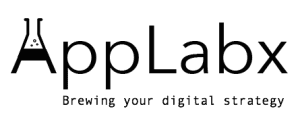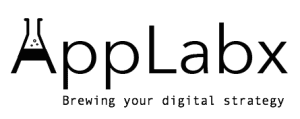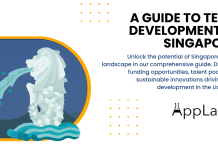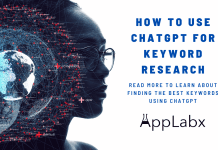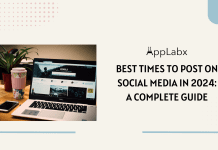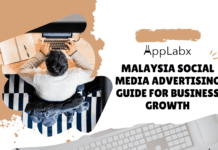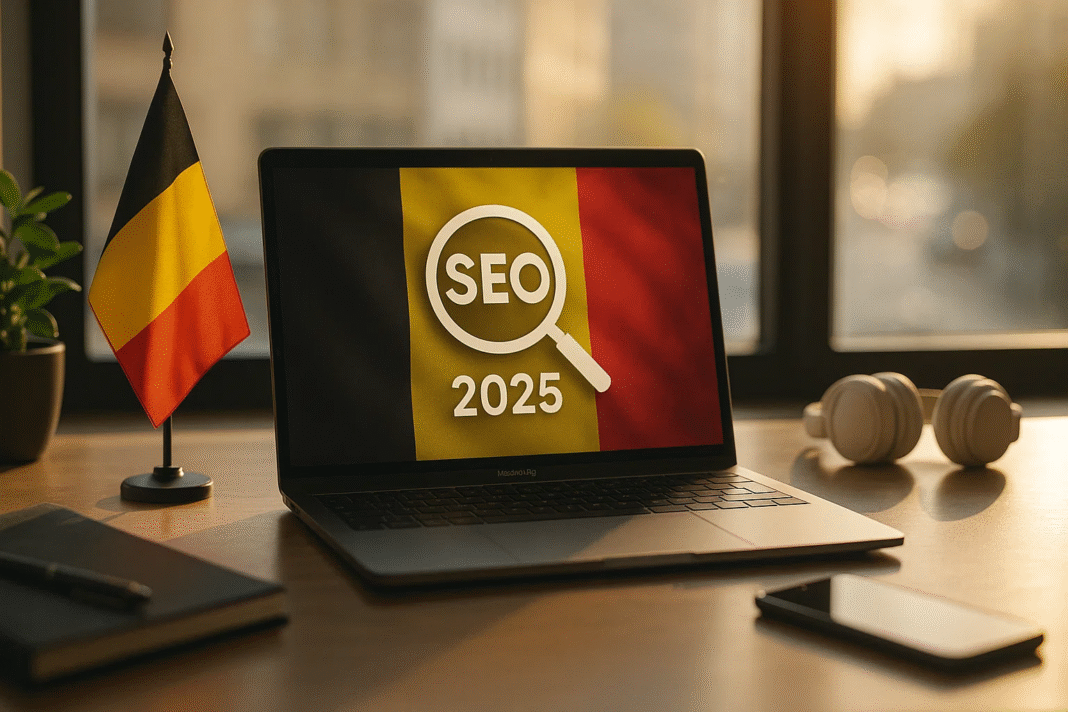Key Takeaways
- AI-driven search, multilingual optimization, and zero-click results are redefining SEO strategies in Belgium for 2025.
- Businesses must focus on AI-resistant content, strong E-E-A-T signals, and hyperlocal strategies to stay competitive.
- Technical SEO, video content, user-generated content, and brand authority are now critical for sustainable growth.
In 2025, Belgium’s digital ecosystem has evolved into one of the most competitive and fast-paced environments in Europe, and search engine optimization (SEO) has become a pivotal strategy for businesses looking to establish a strong foothold in this rapidly expanding online marketplace. With internet penetration rates exceeding 96 percent and e-commerce revenue projected to surpass €24 billion, the Belgian market is now a focal point for companies across industries that aim to engage a sophisticated and digitally savvy audience. As the nature of online search continues to transform, primarily driven by artificial intelligence, multilingual complexities, and stricter data regulations, SEO strategies in Belgium are experiencing a paradigm shift.
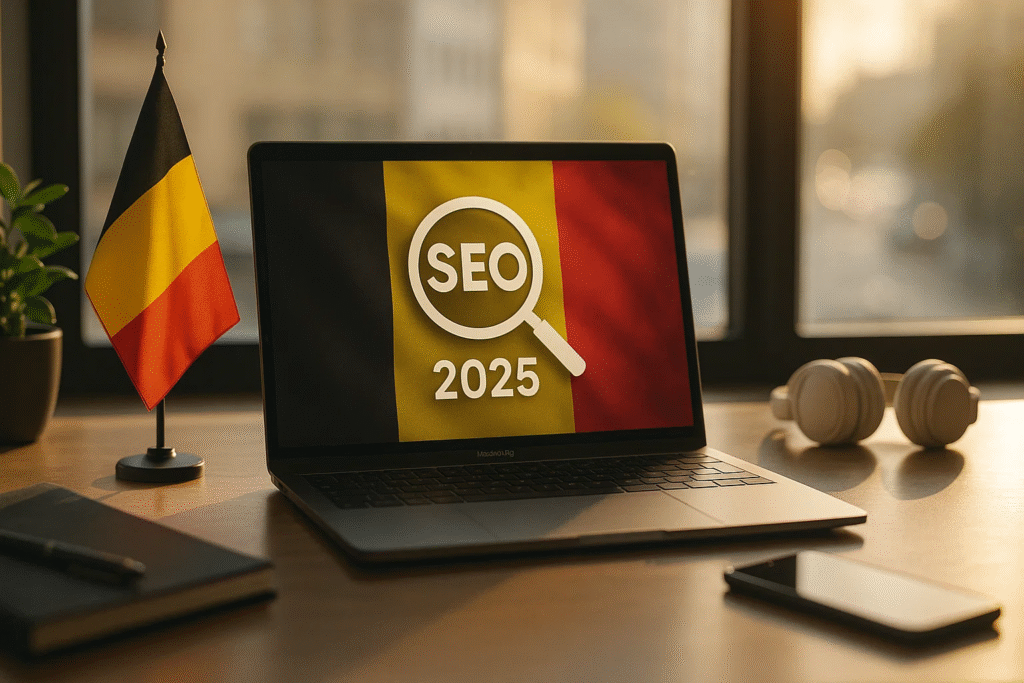
The AI Revolution Reshaping Search Behavior in Belgium
Artificial intelligence is redefining how search engines operate and how users interact with them. The integration of AI Overviews (AIO) by Google has reshaped the search engine results pages (SERPs), reducing traditional click-through rates for informational queries by 18–64 percent. Businesses in Belgium are now compelled to adjust their SEO strategies to ensure they become authoritative sources for AI-generated summaries while still capturing attention and driving meaningful engagement beyond the initial search snippet. AI tools are also automating time-consuming SEO tasks such as keyword analysis, technical audits, and content generation, but human expertise remains crucial for strategy, creativity, and ensuring authenticity.
Multilingual and Hyperlocal SEO as Key Market Differentiators
Belgium’s linguistic diversity represents one of the country’s greatest opportunities and challenges for SEO in 2025. The coexistence of Dutch, French, German, and a growing English-speaking audience requires businesses to create hyperlocal and culturally tailored strategies. A one-size-fits-all approach is no longer effective. Each linguistic region—whether Flanders, Wallonia, Brussels, or the German-speaking community—has unique cultural nuances, search intent patterns, and keyword preferences that must be addressed with precision. Brands targeting the Belgian market must develop multilingual content strategies supported by proper hreflang tags, localized keyword research, and commune-specific optimization, particularly in urban hubs like Brussels where 19 communes exhibit distinct digital behaviors.
The Growing Influence of Voice Search and Visual Content
Voice search continues its upward trajectory in Belgium, with over a quarter of users in multilingual cities like Brussels conducting multiple daily searches using voice assistants, often switching between languages. This trend emphasizes the need for businesses to optimize for conversational queries and question-based keywords. Similarly, visual-first strategies—encompassing video SEO, image optimization, and the integration of photos and videos within Google Business Profiles—have become indispensable. Google actively rewards multimedia-rich content, and platforms like YouTube and Google Images now feature prominently in search results, reshaping how users consume information online.
Privacy Regulations and Their Impact on Belgian SEO
Stricter regulations under GDPR and the updated 2025 guidance from the Belgian Data Protection Authority (BDPA) are shaping how businesses collect and process data. These regulations have far-reaching implications for SEO-related analytics, retargeting campaigns, and user experience. Poorly implemented cookie consent systems, intrusive banners, and privacy non-compliance can negatively impact page performance and organic rankings. To remain competitive, Belgian businesses must integrate privacy-first SEO strategies, ensuring that data protection measures align seamlessly with user experience.
Increased Investment in Digital and SEO in Belgium
The Belgian marketing landscape continues to shift toward digital channels. Digital advertising accounted for 41.9 percent of all media investments in 2024, driven by search, social, and online video, with a projected compound annual growth rate (CAGR) of 7.3 percent through 2029. As companies allocate greater resources to SEO, they are increasingly viewing it as a long-term investment that delivers significant returns. Case studies across Belgium show that strategic, multilingual SEO campaigns not only drive organic traffic but also reduce reliance on paid advertising, leading to sustainable growth.
A Future Defined by Innovation and Adaptation
The SEO environment in Belgium in 2025 is marked by an extraordinary blend of innovation, competition, and complexity. AI-generated search experiences, a highly multilingual population, growing voice and visual search behaviors, and the influence of strict privacy regulations are forcing brands to rethink traditional strategies. Success in this market depends on a combination of technical excellence, authoritative and localized content, robust brand building, and agile adaptation to emerging technologies.
For businesses operating within or entering Belgium, understanding these trends is no longer optional. It is the foundation for developing SEO strategies that can not only withstand the pressures of a constantly evolving digital ecosystem but also capture market share in one of Europe’s most dynamic online economies. This blog explores these developments in detail, offering insights into the trends, challenges, opportunities, and strategies that will define SEO success in Belgium throughout 2025 and beyond.
ut, before we venture further, we like to share who we are and what we do.
About AppLabx
From developing a solid marketing plan to creating compelling content, optimizing for search engines, leveraging social media, and utilizing paid advertising, AppLabx offers a comprehensive suite of digital marketing services designed to drive growth and profitability for your business.
At AppLabx, we understand that no two businesses are alike. That’s why we take a personalized approach to every project, working closely with our clients to understand their unique needs and goals, and developing customized strategies to help them achieve success.
If you need a digital consultation, then send in an inquiry here.
Or, send an email to [email protected] to get started.
The State of SEO in Belgium in 2025
- Overview of Belgium’s Digital Ecosystem
- Belgium’s Digital Landscape in 2025: A Foundation for SEO
- The Evolving Search Engine Ecosystem in Belgium
- The Transformative Impact of Artificial Intelligence on SEO
- Key SEO Trends and Strategic Imperatives for 2025
- Navigating Belgium’s Unique SEO Challenges
- SEO Investment and ROI in Belgium
- Recommendations
1. Overview of Belgium’s Digital Ecosystem
Overview of Belgium’s Digital Ecosystem
- Internet Penetration and E-commerce Expansion
- Internet usage in Belgium has reached an advanced maturity level, with penetration at approximately 96.4% of the population.
- The Belgian e-commerce sector is projected to surpass €24 billion in 2025, offering a fertile environment for brands aiming to capture digital consumer attention.
- Search Engine Dominance
- Google continues to dominate the Belgian search market with 90.62% market share, positioning it as the central arena for SEO strategies.
- Other search engines hold minor influence, making Google-focused optimization non-negotiable for visibility.
Key Transformations Impacting SEO
- Rise of AI Overviews (AIO)
- Since their launch on March 26, 2025, AI Overviews have redefined search behavior in Belgium.
- These AI-driven summaries appear at the top of search results, answering queries instantly.
- Impact on CTR:
- Studies report a decline of 18% to 64% in organic click-through rates for informational content.
- Traditional ranking alone no longer guarantees organic traffic.
- Strategic Response:
- Focus shifts from traffic acquisition to brand authority and visibility within AI-driven answer panels.
- Businesses must aim to become the primary sources for AI-generated responses.
Challenges Unique to Belgium
- Multilingual Complexity
- Belgium’s linguistic diversity (Dutch, French, and German) requires:
- Highly localized keyword research.
- Region-specific content strategies.
- Cultural nuance beyond basic translation.
- Belgium’s linguistic diversity (Dutch, French, and German) requires:
- Data Privacy and Compliance
- With the Belgian Data Protection Authority (BDPA) regulations updated on March 20, 2025, organizations must:
- Implement transparent, consent-based data collection.
- Adapt analytics frameworks to avoid data loss due to strict consent barriers.
- With the Belgian Data Protection Authority (BDPA) regulations updated on March 20, 2025, organizations must:
SEO Opportunities and ROI
- High Return on Investment
- Research highlights that SEO in Belgium delivers a return of over $22 for every $1 invested.
- Retail case studies demonstrate:
- 218% growth in organic traffic after comprehensive SEO strategies.
- A financial return of €5.40 for every €1 spent.
- Untapped Growth Areas
- Structured data implementation to optimize for AI Overviews.
- Multilingual voice search targeting, given the growth of AI-driven voice assistants.
Comparative Table: Key SEO Metrics in Belgium (2025)
| Metric | Value / Impact in 2025 |
|---|---|
| Internet Penetration | 96.4% |
| E-commerce Market Value | €24 Billion+ |
| Google Market Share | 90.62% |
| Organic CTR Decline Due to AI Overviews | 18% – 64% |
| Average SEO ROI | $22 for every $1 spent |
| Multilingual Requirement | Dutch, French, German strategies |
Strategic Recommendations for Businesses
- Adaptation to AI Overviews
- Develop expert-led content positioned as authoritative sources.
- Use structured data, schema markup, and E-E-A-T principles.
- Localized Content Marketing
- Produce content tailored to the three major language groups.
- Employ regional influencers and cultural touchpoints.
- Privacy-Centric Analytics
- Integrate cookie-less tracking methods that comply with updated BDPA laws.
- Investment in Voice and Visual Search
- Optimize content for conversational queries and visual discovery.
Conclusion
The Belgian SEO landscape in 2025 stands as an intricate but rewarding environment. It is defined by advanced AI-driven search experiences, complex linguistic diversity, strict data privacy frameworks, and a mature digital economy. Businesses that align their strategies with these trends and prioritize authority and localization will thrive in one of Europe’s most competitive online markets.
2. Belgium’s Digital Landscape in 2025: A Foundation for SEO
A. Internet Penetration and Usage
Digital Penetration and Market Maturity
- Population Online
- Belgium has reached 11.3 million active internet users in early 2025, which corresponds to 96.4% of the population.
- Growth between January 2024 and January 2025 was modest, with only 21,000 new users (+0.2%) entering the online ecosystem.
- The market has matured, meaning future expansion will derive from engagement, personalization, and user experience optimization rather than from net-new internet users.
- Remaining Offline Demographics
- Around 421,000 Belgians (3.6%) remain offline.
- The offline segment is heavily concentrated among senior citizens:
- 35% of individuals aged 75–89 have never used the internet.
- An additional 5% in this group have been inactive for over 3 months.
- In contrast, 96% of the 16–74 age group are digitally connected.
- This disparity reflects a digital divide that persists even in a highly connected country.
Key Implications for SEO
- Targeting Strategies
- Businesses focusing on senior markets need to consider:
- Simplified digital interfaces.
- Voice-command technologies.
- Traditional marketing strategies alongside online campaigns.
- For younger and middle-aged demographics, advanced SEO remains critical due to their near-complete online presence.
- Businesses focusing on senior markets need to consider:
- Shift from Acquisition to Engagement
- Since new internet user growth has plateaued, the priority has shifted to:
- Enhancing user engagement.
- Building long-term relationships with existing users.
- Optimizing retention-driven SEO strategies.
- Since new internet user growth has plateaued, the priority has shifted to:
E-commerce Readiness and Digital Literacy
- Advanced Digital Literacy
- Over 88% of Belgians regularly use the internet for online purchases, well above the EU average of 75%.
- This indicates a digitally mature, informed consumer base.
- Consumer Spending Potential
- The average Belgian online shopper is expected to spend approximately $2,850 (€2,600) in 2025.
- This high level of purchasing activity provides a strong incentive for businesses to prioritize e-commerce SEO.
SEO Focus Areas in a Digitally Mature Market
- Conversion Optimization
- Efforts must emphasize streamlined purchase funnels and seamless user journeys.
- Sophisticated Content Strategies
- Instead of basic awareness, advanced product discovery and niche-targeted content become crucial.
- Localization
- Catering to a multilingual population (Dutch, French, German) with nuanced and culturally relevant strategies is essential.
Key Data Table: Belgium’s Internet Usage Landscape (2025)
| Indicator | Value (2025) |
|---|---|
| Total Internet Users | 11.3 Million |
| Internet Penetration Rate | 96.4% |
| Offline Population | 421,000 (3.6%) |
| Internet Penetration (16–74 years) | 96% |
| Internet Penetration (75–89 years) | 60% |
| Regular Online Shoppers | 88% |
| Average Annual Online Spending per Shopper | $2,850 (≈ €2,600) |
Visual: Online Penetration by Age Group in Belgium (2025)
| Age Group | Penetration % |
|--------------|---------------|
| 16–74 | ██████████ 96% |
| 75–89 | ██████ 60% |
Insights for SEO Professionals
- Belgium’s SEO strategies in 2025 must evolve from general visibility efforts to advanced engagement-driven campaigns.
- Segmentation by age, language, and cultural preference will become more significant as the online audience matures.
- With e-commerce growth and digital literacy peaking, competition intensifies, making AI-driven personalization, structured data, and semantic search optimization indispensable.
B. Mobile Connectivity and Speeds
State of Mobile Connectivity
- Widespread Mobile Access
- Belgium reported 12.0 million active mobile connections at the beginning of 2025, representing 102% of the total population.
- This figure indicates a mobile-saturated society where many individuals use multiple devices or SIM cards, underlining the dominance of mobile-first consumption habits.
- Growth trends:
- 163,000 new mobile connections added from 2024 to 2025, showing a 1.4% year-on-year increase.
- 98.7% of all connections are classified as broadband (3G, 4G, 5G), ensuring almost universal access to high-speed internet services.
Performance of Mobile and Fixed Internet
- Mobile Internet Speeds
- Median download speed: 88.69 Mbps in January 2025.
- Speed increase: 19.36 Mbps (+27.9%) year-over-year.
- 5G capabilities in urban centers: Speeds reaching 280 Mbps on average in 2024, enabling seamless high-definition streaming and low-latency applications.
- Fixed Internet Speeds
- Median download speed: 107.01 Mbps as of January 2025.
- Improvement: +14 Mbps (+15.1%) compared to the previous year.
- These robust speeds reflect a strong infrastructure base, particularly in urban areas.
Impact on Digital Content Consumption
- Mobile-First Environment
- The combination of high-speed networks and high device penetration drives content consumption toward video-rich, visually dynamic formats.
- SEO and UX priorities in Belgium:
- Mobile-first website design.
- Page load times of 2.5 seconds or less.
- Optimized multimedia elements (video, interactive visuals, AR).
Regional Infrastructure Disparities
- Challenges in Rural Areas
- Fiber-to-the-premises (FTTP) coverage remains below the EU average, especially in sparsely populated zones.
- This creates digital experience disparities between urban and rural populations.
- SEO Adaptation Strategies
- For rural audiences:
- Optimize lightweight page design with reduced file sizes.
- Prioritize mobile broadband accessibility.
- Use responsive image compression and minimalistic layouts to ensure performance.
- For rural audiences:
Key Connectivity Statistics: Belgium 2025
| Metric | 2025 Value | Year-on-Year Change |
|---|---|---|
| Active Mobile Connections | 12.0 Million (102% of population) | +163,000 (+1.4%) |
| Broadband-enabled Mobile Connections | 98.7% | — |
| Median Mobile Download Speed | 88.69 Mbps | +27.9% (+19.36 Mbps) |
| Median Fixed Download Speed | 107.01 Mbps | +15.1% (+14 Mbps) |
| Average 5G Speed in Urban Areas (2024) | 280 Mbps | — |
Visual: Internet Speed Trends in Belgium
Median Download Speeds (Mbps)
120 ┤
100 ┤ ████ 107.01 (Fixed)
80 ┤ ████ 88.69 (Mobile)
60 ┤
40 ┤
20 ┤
0 ┼─────────────────────────────────────────────
2024 2025
SEO Implications in a High-Speed Mobile Landscape
- Mobile-First Optimization
- Responsive design and progressive web apps become non-negotiable.
- Rich Content Strategies
- High bandwidth allows for immersive video content, interactive product demonstrations, and AR/VR-based brand experiences.
- Rural Considerations
- Balance advanced UX with technical optimization for slower, less stable connections in low-density regions.
C. Social Media Adoption
Scope of Social Media Penetration
- User Base and Penetration Rates
- As of January 2025, Belgium recorded 8.98 million active social media identities, representing 76.4% of the total population.
- Within the internet-using population, this accounts for 79.3% of all online users, indicating a deeply embedded social media culture.
- Among adults:
- 8.02 million users aged 18+ actively engage on social media.
- This equals 84.5% penetration within the adult demographic.
- Gender distribution:
- 50.4% female users.
- 49.6% male users, demonstrating a balanced user base.
Trends and Shifts in User Behavior
- Change in Active Accounts
- From early 2024 to January 2025, there was a decline of 190,000 social media identities (-2.1%).
- Data analysts attribute this trend partly to platform data corrections; however, it may also suggest:
- User fatigue with traditional social platforms.
- A potential shift in content consumption towards private communities, niche apps, or short-form video ecosystems.
- Impact on Engagement Models
- If this trend continues:
- Organic reach on social media could become harder to achieve.
- Brands may need multi-channel content integration that connects SEO-driven strategies with social discovery mechanisms.
- If this trend continues:
Platform-Specific Relevance
- Dominance of Video-Based Platforms
- YouTube remains a cornerstone, matching the total social media user base with 8.98 million Belgian users.
- Facebook continues to be significant, with 6.40 million active users in early 2025.
- Pre-Purchase Research Behavior
- 43% of Belgians consult YouTube reviews before purchasing a product.
- Social platforms thus function as key research channels, shaping trust and influencing decision-making long before a search engine click occurs.
Strategic SEO Implications
- Social and SEO Integration
- Given the plateauing or mild decline in social media activity, organic social reach alone is insufficient.
- Best practices now include:
- Embedding social video content directly into SEO-focused landing pages.
- Encouraging user-generated content (UGC) such as reviews, unboxings, and testimonials.
- Leveraging social listening tools to identify emerging consumer queries.
- Video Optimization
- Optimizing for YouTube SEO (titles, descriptions, tags, and captions) is increasingly vital to capture intent-based traffic from both YouTube’s search engine and Google’s blended search results.
Key Social Media Metrics in Belgium (2025)
| Metric | 2025 Value |
|---|---|
| Active Social Media Users | 8.98 Million (76.4% of population) |
| Share of Internet Users on Social Media | 79.3% |
| Adult (18+) Social Media Penetration | 84.5% |
| Gender Distribution | 50.4% Female / 49.6% Male |
| Change from 2024 | -190,000 accounts (-2.1%) |
| Facebook Users | 6.40 Million |
| YouTube Users | 8.98 Million |
| Belgians Using YouTube for Pre-Purchase Research | 43% |
Visualization: Social Media Penetration vs Population in Belgium (2025)
Population Coverage:
100% ┤
80% ┤█████████████████████████ 76.4%
60% ┤
40% ┤
20% ┤
0% ┼─────────────────────────────────
Social Media Users
Actionable Recommendations for SEO Professionals
- Focus on Video-Integrated SEO
- Create search-optimized video content, particularly for YouTube, that educates, reviews, and influences consumer decisions.
- Leverage Social Trust Signals
- Integrate social proof elements into landing pages.
- Adapt for Multi-Channel Discovery
- Use combined SEO and social marketing campaigns to strengthen brand presence across research and conversion phases.
D. E-commerce Growth and Consumer Behavior
Belgium’s E-commerce Market Trajectory
- Market Size and Growth
- Belgium’s e-commerce market is projected to exceed €24 billion in 2025, rising from approximately €18 billion in 2024.
- Growth indicators:
- Compound annual growth rate (CAGR) expected at 5.6% through 2028.
- Mordor Intelligence forecasts the market value at USD 22.71 billion in 2025 with a trajectory toward USD 31.79 billion by 2030 at 6.95% CAGR.
- These metrics reflect a rapidly expanding digital economy where consumer purchasing power is steadily increasing.
Consumer Spending Power
- High Spending Patterns
- Average annual spend per online shopper: $2,850 (≈ €2,600) in 2025.
- This figure places Belgium among Europe’s highest-spending e-commerce markets, signaling a consumer base that values convenience, speed, and quality of service.
- Implications for SEO Strategies
- The focus must shift from traffic generation to maximizing conversion rates.
- Trust elements (reviews, ratings, secure checkout) are essential for sustaining customer loyalty.
- Businesses need to optimize for customer experience, usability, and product discovery to leverage each visitor’s high spending potential.
Mobile Commerce as a Primary Driver
- Mobile-First Purchases
- 58% of all e-commerce transactions in Belgium are executed via smartphones, a number that continues to grow annually.
- This trend highlights the necessity of mobile-first SEO strategies, including:
- Responsive web design.
- Fast loading times (targeting <2.5 seconds).
- Optimized mobile checkout flows to reduce abandonment rates.
Cross-Border E-commerce Trends
- International Buying Preferences
- 55% of Belgian online shoppers purchased from foreign retailers in 2024, making cross-border activity a defining feature of the Belgian e-commerce market.
- Reasons for Cross-Border Shopping
- Price sensitivity among Belgian consumers.
- Broader product variety available from neighboring countries.
- Linguistic flexibility (Dutch, French, German) that allows ease of shopping across EU borders.
- Competition Challenges
- Belgian businesses face strong competition from international e-commerce giants such as:
- Amazon.de
- Zalando.nl
- Decathlon.fr
- Belgian businesses face strong competition from international e-commerce giants such as:
SEO Strategic Adaptation
- Differentiation for Local Businesses
- Emphasize local advantages such as:
- Same-day or next-day delivery.
- Easier returns and local support.
- Regionally adapted content and customer service.
- Emphasize local advantages such as:
- International SEO Opportunities
- Belgian companies looking outward can use multilingual SEO strategies to reach neighboring markets.
- Structured data and geo-targeting help improve visibility for both local and cross-border search intents.
Key E-commerce Metrics for Belgium (2025)
| Indicator | 2025 Value / Forecast |
|---|---|
| Market Value (2025) | €24+ Billion / USD 22.71 Billion |
| Forecast Value (2030) | USD 31.79 Billion |
| CAGR (2025–2030) | 6.95% |
| Average Annual Online Spend per Shopper | $2,850 (≈ €2,600) |
| Share of Purchases via Mobile Devices | 58% |
| Cross-Border Purchase Rate | 55% |
Visualization: Drivers of Belgian E-commerce Growth (2025)
Growth Factors
100% ┤
80% ┤██████████████ Mobile Commerce (58%)
60% ┤█████████ Cross-Border Shopping (55%)
40% ┤██████ Market CAGR (5.6% - 6.95%)
20% ┤
0% ┼─────────────────────────────────────────────
2024 2025
Actionable SEO Insights
- Prioritize Mobile-first Optimization
- Ensure seamless navigation and purchasing experiences across devices.
- Enhance Localized SEO
- Focus on hyper-local search terms, delivery-related keywords, and customer trust signals.
- Integrate E-commerce SEO with Content Marketing
- Product tutorials, comparison guides, and video content to address research-driven buyers.
- Consider International Expansion
- Implement multilingual strategies to tap into French, Dutch, and German-speaking audiences across borders.
E. Digital Infrastructure and Literacy
Belgium’s Digital Ecosystem and Government Commitment
- Technology-Driven Landscape
- Belgium has cultivated a highly dynamic digital ecosystem, marked by:
- Rapid adoption of innovative technologies by enterprises.
- Strong Very High Capacity Network (VHCN) penetration.
- A recognized leadership position in cybersecurity and online public services.
- Belgium has cultivated a highly dynamic digital ecosystem, marked by:
- Strategic Government Investment
- A national digital roadmap composed of 166 structured initiatives is backed by €913.71 million in funding, amounting to 0.15% of the national GDP.
- This roadmap focuses on:
- Expanding digital inclusion.
- Enhancing infrastructure for cloud and high-speed connectivity.
- Promoting digital skills training and cybersecurity resilience.
- These initiatives strengthen the broader environment for businesses adopting SEO by ensuring that Belgian consumers and enterprises operate in a digitally mature environment.
Connectivity and Broadband Penetration
- Advanced Broadband Infrastructure
- 96% of households enjoy access to high-speed internet, which serves as a foundation for:
- Stable digital experiences.
- Rich content delivery, including video streaming and interactive websites.
- Greater engagement with e-commerce and digital marketing campaigns.
- 96% of households enjoy access to high-speed internet, which serves as a foundation for:
- Public Attitude Towards Digitalization
- 72% of Belgian citizens report that digitalization simplifies their lives, demonstrating:
- Positive sentiment toward online services.
- Increased trust in digital channels for daily tasks.
- A willingness to engage with content and brands online.
- 72% of Belgian citizens report that digitalization simplifies their lives, demonstrating:
Digital Literacy and Market Implications
- Highly Digitally Literate Population
- The population demonstrates proficiency in using online platforms, which translates to:
- Higher expectations for fast, informative, and user-friendly websites.
- A market where advanced SEO techniques like structured data, voice search optimization, and personalized content become critical.
- The population demonstrates proficiency in using online platforms, which translates to:
- Opportunity Among SMEs
- Despite overall progress:
- Digital transformation among Small and Medium-sized Enterprises (SMEs) remains incomplete.
- Cloud adoption and advanced online strategies are areas of untapped potential.
- Many SMEs:
- Lack comprehensive SEO strategies and digital marketing frameworks.
- May struggle to compete effectively with digitally mature large companies.
- Despite overall progress:
SEO Opportunities for SMEs
- Tailored SEO Services
- A large untapped market exists for:
- Affordable and scalable SEO packages.
- Consulting services to enhance visibility, competitiveness, and growth.
- A large untapped market exists for:
- Alignment with National Goals
- By supporting SMEs in adopting cloud infrastructure and SEO best practices, agencies and consultants:
- Directly contribute to bridging the digital divide.
- Leverage Belgium’s high-speed infrastructure for maximum ROI.
- By supporting SMEs in adopting cloud infrastructure and SEO best practices, agencies and consultants:
Key Digital Infrastructure Metrics in Belgium (2025)
| Metric | Value / Status in 2025 |
|---|---|
| National Digital Roadmap Measures | 166 |
| Government Digitalization Investment | €913.71 Million (0.15% of GDP) |
| VHCN Household Coverage | 96% |
| Citizen Approval of Digitalization | 72% |
| SME Cloud Adoption and Digital Readiness | Identified as requiring further improvement |
Matrix: Digital Infrastructure vs SEO Impact in Belgium 2025
| Aspect | Strength Level | SEO Impact Opportunity |
|---|---|---|
| Broadband Coverage | High (96%) | Enables fast-loading, media-rich, mobile-first SEO |
| Cloud Infrastructure Adoption | Moderate | Creates demand for consulting and cloud-driven SEO strategies |
| Cybersecurity Ecosystem | High | Enhances trust signals critical for e-commerce and SEO |
| Digital Literacy | High | Fosters advanced SEO strategies beyond basic visibility |
| SME Digital Adoption | Low/Medium | High growth opportunity for targeted SEO services |
Actionable SEO Insights
- Capitalize on the High-Speed Network Environment
- Create media-rich content optimized for mobile and high-resolution formats.
- SME-Focused Growth Strategies
- Offer educational SEO programs and entry-level campaigns for businesses new to digital marketing.
- Leverage National Digital Transformation Goals
- Align SEO strategies with government-supported initiatives to help SMEs scale digitally.
3. The Evolving Search Engine Ecosystem in Belgium
A. Dominance of Google and Other Search Engines
Overview of Belgium’s Search Engine Landscape
- Belgium’s search environment in 2025 demonstrates:
- An overwhelming dominance of Google as the primary gateway to online visibility.
- Changing user behaviors due to evolving device usage patterns.
- The introduction of AI-driven search features, such as AI Overviews, fundamentally redefining SEO strategies.
Google’s Predominance and Strategic Significance
- Market Share Concentration
- Google controls 90.62% of the search engine market as of June 2025, maintaining its position as the key platform for SEO success.
- Historical trends in 2025:
- April 2025: 91.83%.
- May 2025 (desktop-specific): 81.89%.
- Key Implication:
- Businesses must prioritize Google-optimized SEO strategies including algorithm adaptability, structured data, E-E-A-T (Experience, Expertise, Authoritativeness, and Trustworthiness), and AI Overview readiness.
- Focus on AI Overviews
- With Google deploying AI-generated summaries at the top of results, Belgian SEO strategies must adapt to:
- Target visibility within AI-curated answers.
- Enhance content authority and contextual depth to be selected as source material.
- With Google deploying AI-generated summaries at the top of results, Belgian SEO strategies must adapt to:
Opportunities in Alternative Search Engines
- Bing
- Market share (June 2025): 5.94% overall.
- April 2025: 5.2%.
- Desktop (May 2025): 13.61% share, indicating a niche opportunity in desktop-focused segments, such as:
- B2B professionals.
- Older demographics who still prefer traditional desktop browsing.
- Smaller Search Engines
- Ecosia: 1.01% share.
- DuckDuckGo: 0.99% share, particularly favored by privacy-conscious users.
- Yahoo!: 0.76% share.
- While these platforms hold minor overall shares, specialized SEO for these engines can appeal to unique audiences.
Device Usage Trends and Impact on Search Behavior
- Desktop vs Mobile
- Mobile-first search patterns dominate Belgium’s search landscape, yet desktop retains a stronghold in professional and research-driven contexts.
- Businesses with enterprise-oriented services, financial institutions, or complex B2B solutions must consider a dual strategy focusing on both mobile-first indexing and desktop user behavior.
Key Search Engine Market Share Metrics (Belgium, 2025)
| Search Engine | Market Share (Total) | Market Share (Desktop) | Target Audience Opportunity |
|---|---|---|---|
| 90.62% (June 2025) | 81.89% (May 2025) | Universal audience; AI-Overview optimization | |
| Bing | 5.94% (June 2025) | 13.61% (May 2025) | B2B professionals, older desktop users |
| Ecosia | 1.01% | <2% | Eco-conscious audiences |
| DuckDuckGo | 0.99% | <2% | Privacy-focused, niche users |
| Yahoo! | 0.76% | <2% | Declining audience base |
Visualization: Search Engine Market Share in Belgium (June 2025)
Market Share:
Google ██████████████████████████████████ 90.62%
Bing ████ 5.94%
Ecosia █ 1.01%
DuckDuckGo █ 0.99%
Yahoo! █ 0.76%
Actionable SEO Implications
- Google-Centric SEO as Priority
- Primary investment must be directed towards Google, ensuring:
- Mobile-first performance.
- Rich structured data for AI-driven search visibility.
- Authority-driven, multilingual content aligned with Belgian diversity.
- Primary investment must be directed towards Google, ensuring:
- Selective Multi-Engine Approach
- For specific sectors, particularly desktop-heavy B2B industries, Bing SEO offers a meaningful secondary channel.
- Adaptation to AI and Behavioral Shifts
- AI Overviews require semantic, well-structured, contextually rich content to maintain visibility as CTR for organic listings declines.
B. Desktop vs. Mobile Search Trends
Distribution of Search Traffic Across Devices
- Balanced Device Usage
- As of June 2025, Belgium exhibits a nearly even split between desktop and mobile search activity:
- Desktop: 50.09%
- Mobile: 47.58%
- Tablets: 2.32%
- Historical Comparison:
- Data from 2022 indicates a similar pattern:
- Desktop: 50.15%
- Mobile: 46.72%
- Data from 2022 indicates a similar pattern:
- This equilibrium underscores that SEO strategies in Belgium must focus equally on mobile and desktop audiences to maximize reach and engagement.
- As of June 2025, Belgium exhibits a nearly even split between desktop and mobile search activity:
SEO Strategy Implications for Multi-Device Optimization
- Comprehensive Optimization Approach
- Mobile-first indexing by Google remains critical, but desktop cannot be deprioritized, as it still accounts for half of the search activity.
- Key technical priorities:
- Responsive web design across all devices.
- Page load times optimized to under 2.5 seconds.
- User-centric interfaces ensuring a seamless transition from browsing to conversion.
Nuances in User Behavior: Desktop vs Mobile Intent
- Research vs Transaction Split
- Data reveals a nuanced behavior pattern in Belgian consumers:
- Desktop: Frequently used for:
- Initial research, in-depth comparisons, and exploring content-rich pages.
- Mobile: Dominates in transactional behavior, driving 58% of all e-commerce purchases.
- Desktop: Frequently used for:
- This suggests that:
- Consumers begin their purchasing journey on desktop but prefer to complete transactions on mobile, benefiting from:
- Convenience.
- Integrated mobile payment options.
- On-the-go access.
- Consumers begin their purchasing journey on desktop but prefer to complete transactions on mobile, benefiting from:
- Data reveals a nuanced behavior pattern in Belgian consumers:
Strategic SEO and Content Alignment
- Device-Specific Optimization Tactics
- For Desktop Users:
- Focus on in-depth guides, comprehensive product reviews, detailed comparisons, and resource-rich content.
- For Mobile Users:
- Emphasize local SEO, quick-loading summaries, concise answers, strong calls-to-action, and simplified checkout experiences.
- Ensure streamlined transactional flows optimized for smaller screens and mobile payment systems.
- For Desktop Users:
Key Metrics: Device Usage in Belgium (2025)
| Device Type | Market Share (2025) | Market Share (2022) | Primary Behavior Pattern |
|---|---|---|---|
| Desktop | 50.09% | 50.15% | Research, comparison, extended browsing |
| Mobile | 47.58% | 46.72% | Transactions, quick searches, local discovery |
| Tablets | 2.32% | 3.13% (approx.) | Secondary browsing, casual engagement |
Visualization: Search Market Share by Device (Belgium, June 2025)
50% ┤█████████████████████████ Desktop (50.09%)
48% ┤███████████████████████ Mobile (47.58%)
2% ┤█ Tablets (2.32%)
Actionable SEO Recommendations
- Equal Priority for Both Platforms
- Avoid strategies that focus exclusively on mobile-first, as desktop continues to be a critical channel for discovery.
- Mobile-First Transaction Optimization
- Design seamless mobile experiences that facilitate purchases while ensuring that research-based content remains desktop-friendly.
- Content Structuring Based on Intent
- Detailed, long-form content for desktop research phases.
- Concise, local, and transactional content for mobile-driven conversions.
C. The Rise of AI Overviews (AIO) and Generative AI in Search
Introduction to AI Overviews (AIO)
- Launch and Expansion
- On March 26, 2025, Belgium experienced a significant turning point in its search landscape with the official rollout of AI Overviews (AIO), formerly called Search Generative Experience (SGE).
- This innovation, initially introduced globally in late 2024, now spans over 100 countries and serves more than 1 billion users, profoundly transforming how individuals interact with search engines.
- What AI Overviews Do
- AI Overviews generate concise, AI-powered summaries that appear at the top of search results, fundamentally altering user behavior:
- Reduces dependence on traditional “blue links”.
- Prioritizes immediate, on-page answers.
- Significantly minimizes the necessity for users to click external websites for basic informational queries.
- AI Overviews generate concise, AI-powered summaries that appear at the top of search results, fundamentally altering user behavior:
Current Impact on Belgian Search Behavior
- Prevalence of AI Overviews
- As of 2025, 47% of all search queries in Belgium trigger an AI Overview.
- Query Type Breakdown:
- 99.2% of AIO-triggered queries have an informational intent.
- This reveals an overwhelming dominance of AI Overviews in non-transactional, research-driven queries.
- The Zero-Click Search Era
- Users are increasingly satisfied with AI-generated summaries, resulting in:
- Declining organic click-through rates (CTR), particularly for content-heavy informational searches.
- An expansion of zero-click searches, where search sessions end without any site visit.
- Google is also testing ads integrated into AIO panels, which may further suppress organic visibility by pushing traditional results lower on the page.
- Users are increasingly satisfied with AI-generated summaries, resulting in:
Impact on SEO Metrics and Strategy
- Redefining SEO Success
- Traditional rankings and click metrics are no longer sole indicators of success.
- Businesses must shift toward:
- Tracking brand visibility within AI Overviews.
- Monitoring brand mentions as a proxy for authority.
- Evaluating the quality of incoming traffic rather than purely traffic volume.
- Adapting Analytics and Measurement
- Updated KPIs must incorporate:
- Impressions within AI-generated results.
- Engagement depth and conversion quality of users who click beyond the AIO panel.
- Visibility share in AI-curated answers for commercial intent.
- Updated KPIs must incorporate:
Key Statistics for Belgium’s AIO Search Landscape (2025)
| Metric / Insight | 2025 Value / Impact |
|---|---|
| Official Launch Date in Belgium | March 26, 2025 |
| Global Reach | 100+ countries, 1 billion users |
| Queries Triggering AI Overviews | 47% of all search queries |
| Informational Intent in AIO-triggered Queries | 99.2% |
| Key Impact | Declining CTR, more zero-click searches, ads in AIO |
Visualization: Shift in Search Query Experience (Belgium, 2025)
Percentage of Queries
100% ┤
80% ┤█████████████████████████████████████ Traditional SERPs (Pre-2024)
60% ┤
40% ┤█████████████████ AI Overviews (47%)
20% ┤
0% ┼──────────────────────────────────────────
2023 2024 2025
Actionable SEO Recommendations for Businesses in Belgium
- Optimize Content for AI Overviews
- Provide structured, authoritative, and contextually rich answers to increase the likelihood of selection in AIO panels.
- Focus on Brand Authority
- Build high domain authority, author expertise (E-E-A-T), and citation credibility to appear within AI-generated summaries.
- Diversify Traffic Channels
- Invest in video SEO, social content, email marketing, and direct traffic strategies to mitigate dependency on traditional organic clicks.
- Revise Measurement Frameworks
- Use visibility and brand impact metrics as critical components of SEO reporting, replacing sole dependence on keyword rankings.
4. The Transformative Impact of Artificial Intelligence on SEO
A. AI Overviews (AIO) and their Effect on Organic CTR
The Profound Shift Introduced by AI Overviews
- Influence on Click Behavior
- The official integration of AI Overviews (AIO) into Belgian search results has caused a significant structural shift in user interaction with search engine results.
- Studies reveal that AI-generated summaries reduce both organic and paid click-through rates, transforming how traffic is distributed across search results.
- Key studies contributing insights:
- Moz: AI Overviews may cause organic traffic losses ranging from 18% to 64%, particularly for content addressing simple informational queries.
- Ahrefs: The CTR for a #1 organic position drops by an average of 34.5% when an AIO panel is present, with the decline intensifying to 37% when both AIO and Featured Snippets are shown simultaneously.
- Semrush: Confirms a systemic reduction in traffic to traditional listings due to AI dominance at the top of the page.
Vulnerability of Informational Content
- Content Types Most Affected
- 99.2% of search queries that trigger AIO are informational in nature.
- Websites focused on:
- Guides
- How-to articles
- Blogs and explanatory resources
- …face the steepest decline in organic visibility and CTR.
- Required Strategic Reorientation
- Traditional content strategies built solely on ranking and attracting clicks are no longer sufficient.
- Content must:
- Position itself as the definitive source that AI models reference.
- Deliver succinct, structured, FAQ-driven insights to improve chances of selection.
- Provide added value (e.g., unique research, proprietary insights, interactive elements) to entice readers who need details beyond AI summaries.
The Changing Nature of CTR by Query Intent
| Query Type | Impact of AIO on CTR | SEO Strategic Priority |
|---|---|---|
| Informational | Severe decline (-18% to -64%) | Structured, schema-rich answers; authoritative data sources |
| Branded | Relatively stable, often +18.7% increase | Brand visibility, PR campaigns, reputation management |
| Commercial / Transactional | Limited immediate impact | Detailed product data, reviews, pricing, CTAs remain essential |
Resilience of Branded and Commercial Queries
- Branded Searches
- Amsive data shows CTR improvements of up to +18.7% for branded queries, as AIO validates user intent and accelerates clicks.
- Strong brand identity ensures:
- Greater trust.
- Higher likelihood of being referenced within AIO content.
- Commercial Queries
- Users still need:
- Pricing details
- In-depth reviews
- Product specifications
- AIO’s current limitations in these areas mean that commercial search performance remains less disrupted.
- Users still need:
Optimizing SEO Strategy for an AI-Dominated SERP
- Tactical Adaptations
- Structure content to be AI-digestible:
- Use schema markup, FAQs, and bullet-point summaries.
- Incorporate unique expertise:
- Provide original data, proprietary insights, and expert commentary to differentiate from AI summaries.
- Enhance post-click value:
- Offer in-depth explorations beyond the AI snippet to draw users deeper into the website.
- Structure content to be AI-digestible:
- Strategic Long-Term Focus
- Brand Authority Development
- Invest in Digital PR campaigns to secure:
- High-authority backlinks.
- Frequent mentions in respected industry publications.
- These efforts strengthen brand trust signals, which AI models use to prioritize content in AIO panels.
- Invest in Digital PR campaigns to secure:
- Brand Authority Development
Visualization: CTR Decline After AIO Introduction (Belgium 2025)
CTR (Top Organic Result)
100% ┤███████████████████████████ Before AIO
70% ┤██████████████ After AIO (-34.5%)
63% ┤████████████ After AIO + Featured Snippets (-37%)
0% ┼───────────────────────────────────────────────
Key Takeaways for Belgian SEO in 2025
- Rankings alone are insufficient.
- Visibility within AIO panels has become a primary goal.
- Brand equity and trustworthiness are essential competitive differentiators.
B. The Shift Towards Zero-Click Searches and Brand Visibility
Emergence of Zero-Click Search Behavior
- Changing Nature of Information Discovery
- The rapid integration of AI-driven search interfaces combined with the popularity of platforms such as Reddit, YouTube, TikTok, and Quora has redefined how Belgian users consume information in 2025.
- Increasingly, users receive answers directly on search platforms or third-party ecosystems, reducing the necessity to click through to a brand’s website.
- This shift has led to a new search ecosystem dominated by “zero-click searches,” where information is absorbed on the results page or alternative channels without a subsequent visit to external pages.
Implications for SEO Metrics and Performance Tracking
- Redefining SEO Beyond Clicks
- Traditional click-through-based metrics are now insufficient as the sole measure of success.
- Key metrics for modern SEO now include:
- Brand impressions across search interfaces and AI summaries.
- Frequency of brand mentions within AI-generated results and user-generated discussions.
- Visibility scores across non-traditional platforms, even when no direct traffic is recorded.
- This broader approach ensures that brand authority and influence are measured, not just immediate website traffic.
The Rise of “Search Everywhere Optimization”
- Expanded SEO Scope
- SEO in Belgium is evolving into “search everywhere optimization,” reflecting the need for visibility beyond Google’s SERPs.
- Businesses must build omnipresent brand recognition across a wide array of platforms:
- AI-driven search responses (Google’s AI Overviews, Bing Copilot).
- Video platforms (YouTube, TikTok, Instagram Reels).
- User-generated content platforms and forums (Reddit, Quora).
- Social discovery platforms (LinkedIn, X).
- Strategic implications:
- Broadened content syndication.
- Active community engagement on forums and social platforms.
- Enhanced visual and video-based content strategies.
Cross-Functional Collaboration in the Zero-Click Era
- Integrated Digital Strategies
- To effectively adapt to this paradigm, SEO professionals must collaborate closely with:
- Content marketing teams for crafting platform-optimized materials.
- Social media specialists for amplifying reach.
- Public relations and digital PR teams for building authority and credibility.
- Unified campaigns ensure that every online touchpoint reinforces brand recognition, regardless of where users interact with the content.
- To effectively adapt to this paradigm, SEO professionals must collaborate closely with:
Key Trends Driving Zero-Click Searches in Belgium
| Trend / Factor | Effect on SEO |
|---|---|
| AI Overviews and Direct Answers | Reduces reliance on traditional SERPs, shifts focus to brand visibility |
| Video-first Content Platforms | Encourages creation of optimized video assets |
| User-Generated Communities | Moves discovery toward Reddit, Quora, niche forums |
| Social Discovery Channels | Drives significant non-search-driven traffic |
| Voice Search & Smart Assistants | Further diminishes traditional click-based user journeys |
Visualization: Impact of Zero-Click Searches on Traffic Flows (Belgium 2025)
100% ┤
80% ┤██████████████████████████ Pre-AI era: clicks dominate
60% ┤
40% ┤██████████ Zero-click interactions (AI summaries, social, forums)
20% ┤
0% ┼──────────────────────────────────────────
2023 2024 2025
Actionable Recommendations for Belgian Businesses
- Prioritize Brand Authority:
Focus on visibility, mentions, and credibility across all platforms, not just rankings. - Develop Platform-Specific Content:
Tailor short-form videos, structured posts, and interactive discussions for discovery outside Google. - Leverage Analytics Beyond SERPs:
Track engagement metrics on forums, social platforms, and AI summaries to measure influence and awareness.
C. LLM Adoption and its Influence on Information Discovery
Rise of LLMs as Gatekeepers of Visibility
- The Shift from Search to Generative AI
- By 2024, a remarkable 40% of enterprise decision-makers initiated their discovery journey through generative AI systems—including ChatGPT, Gemini, and Perplexity—rather than traditional search engines.
- This behavioral evolution demonstrates that LLMs are becoming primary entry points for digital discovery in Belgium and globally.
- Implication: Search engines are no longer the sole gateways to visibility. Instead, AI-driven platforms are emerging as parallel ecosystems where brand visibility is earned through authority and relevance rather than clicks or advertisements.
Redefining SEO for LLM-Driven Environments
- Beyond Keywords: A Contextual and Semantic Model
- LLM SEO focuses on:
- Semantic clarity – content structured in a way that explains meaning beyond individual keywords.
- Contextual relevance – establishing relationships between topics, brands, and services that AI models can infer.
- Entity-level understanding – enabling models to map a brand as a distinct, authoritative entity.
- Unlike traditional SEO, LLMs infer and synthesize information rather than scanning it literally. Therefore, a brand’s online presence must be consistently structured and descriptive to allow machines to:
- Recognize core identity.
- Classify key offerings.
- Establish contextual trust.
- LLM SEO focuses on:
The Concept of “Machine Legibility”
- Optimizing for AI Interpretation
- Content must be designed so that LLMs can interpret relationships between data points rather than just reading text.
- Businesses must:
- Ensure structured clarity across all online properties.
- Provide precise descriptions of services, expertise, and differentiators.
- Aim for a high “NeuroRank” (a conceptual measure of how effectively AI models recognize and rank a brand in their outputs).
Earned Authority as the Cornerstone of LLM Visibility
- Why PPC Does Not Influence AI Results
- Unlike traditional search, visibility within LLM outputs cannot be purchased.
- Studies reveal that up to 90% of AI citations stem from earned media rather than paid campaigns.
- This fact elevates the importance of:
- High-quality earned mentions on authoritative domains.
- Strong digital PR strategies to secure brand references in reputable publications.
- Thought leadership and source-worthy content, which LLMs can rely upon to synthesize accurate answers.
Collaborative Strategies for AI-Era SEO
- Cross-Functional Integration
- Success in LLM SEO requires synergy between SEO, PR, and content creation teams:
- SEO teams ensure machine legibility and structured data implementation.
- PR specialists build relationships that secure high-quality coverage.
- Content teams craft deeply informative resources that AI models can recognize as authoritative.
- Outcome: Brands appear as trusted sources in AI-generated answers, influencing decision-making without direct website visits.
- Success in LLM SEO requires synergy between SEO, PR, and content creation teams:
Table: Traditional Search SEO vs. LLM-Driven SEO
| Factor | Traditional Search SEO | LLM-Driven SEO (2025 and Beyond) |
|---|---|---|
| Primary Focus | Keywords, backlinks, ranking | Entity clarity, contextual meaning, earned authority |
| Visibility Trigger | SERPs (click-based) | AI responses (citation-based) |
| Influence of PPC | High (ads can dominate) | None (cannot buy placement in AI outputs) |
| Content Style | Optimized for human reading and clicks | Optimized for machine understanding and contextual linking |
| Key Performance Metrics | CTR, organic traffic, SERP ranking | Mentions, visibility in AI answers, credibility signals |
Visualization: Changing Discovery Pathways in Belgium
2024 2025
Search Engines ─────────┐ ↓
Generative AI ─────────┘ ↑ Rapidly growing discovery path
Actionable Recommendations for Belgian Businesses
- Focus on Structured Data and Clarity: Ensure that all brand content is machine-readable and explicitly describes expertise.
- Invest in Digital PR: Secure mentions from trusted sources to feed AI models authoritative signals.
- Produce Source-Worthy Content: Publish research-based, evidence-backed insights that AI will favor when generating responses.
D. AI in Content Creation and SEO Workflows
Adoption of AI Across the Belgian SEO Sector
- Prevalence of AI in SEO Workflows
- Research reveals that 86.07% of SEO professionals now actively integrate AI into their workflows, illustrating how deeply automation and intelligent systems have become entrenched in the Belgian digital marketing ecosystem.
- Key observed benefits of AI in SEO include:
- 65% of businesses reporting measurable improvements in their SEO performance.
- 67% of professionals emphasizing AI’s role in automating repetitive and time-intensive processes.
- Core automation applications:
- Keyword clustering and advanced keyword research.
- Meta-tag generation, internal linking recommendations, and SERP feature optimization.
Impact on Efficiency and Performance
- Enhanced Speed and Resource Allocation
- 75% of marketers credit AI with reducing time spent on routine tasks such as keyword research, meta-optimization, and reporting.
- 52% of marketing teams report significant efficiency gains, while 20% report a productivity boost exceeding 50% following the adoption of AI-powered tools.
- These improvements enable Belgian SEO teams to focus on high-value strategic tasks such as advanced content planning, competitive analysis, and digital experience optimization.
AI in Content Development and Ideation
- Key Areas of AI Utilization in Content Workflows
- Content ideation and planning:
- 63% of professionals employ AI for structuring outlines and generating topic clusters.
- 60% rely on AI for brainstorming, generating semantically related concepts, and identifying long-tail search opportunities.
- Drafting and initial writing:
- 42% of organizations utilize AI to generate early-stage long-form content drafts, particularly for blogs, product pages, and guides.
- 67% of users report a noticeable improvement in content quality following AI-assisted drafting.
- Human refinement remains essential:
- 93% of marketers personally review AI-generated content before publication.
- Human oversight ensures alignment with brand tone, factual accuracy, compliance with SEO best practices, and E-E-A-T standards.
- Content ideation and planning:
Balancing Automation with Editorial Oversight
- Risks and Mitigation Strategies
- Concerns about brand safety and accuracy:
- 30% of organizations express concern that AI-generated content, if unmonitored, could harm credibility through factual inaccuracies or generic tone.
- Implications for Belgian SEO practitioners:
- Implement rigorous editorial processes for fact-checking.
- Use AI primarily for acceleration, not replacement, of human expertise.
- Align output with Google’s Experience, Expertise, Authoritativeness, and Trustworthiness (E-E-A-T) guidelines to safeguard rankings.
- Concerns about brand safety and accuracy:
Table: Benefits vs. Risks of AI Integration in SEO (Belgium, 2025)
| Aspect | Benefits for SEO Workflows | Associated Risks and Considerations |
|---|---|---|
| Automation of Repetitive Tasks | Reduced workload; 65% improved results | Risk of over-reliance and generic strategies |
| Content Ideation and Drafting | Faster content planning and outlines (63% adoption) | Potential for inaccurate or uninspired drafts |
| Productivity Gains | Up to 50% higher team efficiency in some cases | Dependence on tools may reduce creative exploration |
| Quality Improvement (Reported) | 67% report improved overall quality of content | AI outputs still require intensive editorial oversight |
| Compliance with E-E-A-T | Enhanced by combining AI analysis with human expertise | Penalization risk if human oversight is lacking |
Visualization: AI Influence on SEO Team Productivity in Belgium (2024–2025)
100% ┤
80% ┤███████████████████████ Significant productivity boost (>50%)
60% ┤█████████████████ Moderate improvements (~30–50%)
40% ┤██████ Minor impact (<20%)
20% ┤
0% ┼────────────────────────────────────────────
2024 Adoption 2025 Adoption
Strategic Recommendations for SEO Agencies and Brands in Belgium
- Integrate AI selectively: Use AI for ideation, structure, and analysis, but rely on human creativity for strategic narratives.
- Maintain strict editorial processes: Apply multi-step human review to avoid brand safety issues.
- Invest in training: Enhance teams’ skills to ensure AI-assisted content still meets the highest editorial and SEO standards.
- Leverage AI analytics: Use AI-driven insights to guide topic relevance, keyword selection, and SERP feature opportunities.
E. Strategies for AI-Resistant Content and E-E-A-T
Creating AI-Resistant Content in an AI-Dominated Search Landscape
- Focusing on Unique, Original Contributions
- Businesses in Belgium must now emphasize content creation that cannot be easily replicated by AI-driven summaries.
- Key tactics include:
- Conducting original research and publishing proprietary studies or white papers.
- Using unique datasets, surveys, and case studies that provide information beyond aggregated AI knowledge.
- Offering expert insights and lived experiences to enrich content depth and authenticity.
- Why AI-Resistant Content Matters
- AI models are primarily designed to synthesize pre-existing information rather than generate new, verifiable insights.
- By delivering content that offers more depth than surface-level answers, websites can:
- Increase engagement and time-on-page metrics.
- Encourage users to click through rather than rely on AI-generated SERP summaries.
Reinforcing E-E-A-T as a Core SEO Pillar
- Importance of E-E-A-T in 2025
- Google’s Experience, Expertise, Authoritativeness, and Trustworthiness (E-E-A-T) signals have evolved into a primary ranking determinant, particularly within AI-driven search environments.
- Strategies to build strong E-E-A-T signals:
- Showcasing real-world experience of content authors with visible credentials.
- Featuring authorship transparency with verified profiles.
- Collaborating with respected industry publications for backlinks and brand mentions.
- Actively managing online reputation through reviews, PR campaigns, and thought leadership content.
- Impact of E-E-A-T on AI Overviews
- AI-generated summaries inherently prioritize authoritative sources, meaning that businesses with robust E-E-A-T signals have a significantly higher chance of being featured in AI Overviews and cited across AI-generated responses.
Optimizing Content Structure for Snippets and AI Integration
- Key Structural Approaches
- To align with AI Overviews and SERP features:
- Use structured formatting with clear subheadings.
- Incorporate bullet lists, FAQ sections, and short-form answers for immediate clarity.
- Embed schema markup to make content machine-readable.
- To align with AI Overviews and SERP features:
- Encouraging User Clicks Despite Zero-Click Trends
- While AI may present summaries directly on SERPs:
- Provide teasers of valuable information while keeping full insights within the content.
- Use strategic internal linking to guide users to in-depth resources.
- Deliver value-rich, longer-form content that AI cannot fully summarize.
- While AI may present summaries directly on SERPs:
Table: Key Actions for Building AI-Resistant and E-E-A-T Optimized Content (Belgium 2025)
| SEO Focus Area | Recommended Strategies | Outcome in AI-Driven Search |
|---|---|---|
| Original Research | Proprietary surveys, case studies, first-party data | Enhanced credibility and unique insights |
| Author Authority | Visible credentials, expert profiles, verified contributions | Greater trustworthiness |
| Content Structure | Use of FAQs, lists, schema, concise responses | Increased chance of snippet and AIO inclusion |
| Brand Reputation | Mentions in authoritative media, thought leadership campaigns | Stronger brand trust and higher rankings |
| Engagement Techniques | Create curiosity to drive clicks beyond AI summaries | Improved CTR despite zero-click results |
Visualization: Impact of AI-Resistant Content on User Engagement Metrics
100% ┤
80% ┤█████████████████████████
60% ┤██████████████ Increased Time-on-Page
40% ┤████████ Higher Click-Through Rates
20% ┤██ Improved Brand Recall
0% ┼──────────────────────────────
Generic Content AI-Resistant Content
Strategic Recommendations for Belgian Businesses
- Prioritize first-party insights and original research to create exclusive value that AI models cannot easily replicate.
- Invest in author authority and industry recognition to strengthen signals of expertise and trust.
- Adopt content structuring best practices to maximize both snippet inclusion and human engagement.
- Monitor zero-click performance metrics by tracking impressions, mentions, and engagement beyond traffic alone.
5. Key SEO Trends and Strategic Imperatives for 2025
A. Local SEO: Hyperlocal Relevance and Google Business Profile Optimization
Local SEO: Hyperlocal Targeting as a Competitive Advantage
- Growing Importance of Local Search in Belgium
- In 2025, local SEO has become a critical growth driver for Belgian businesses, as user search behaviors increasingly reflect a strong focus on geographically specific needs.
- Key statistics:
- Over 40% of all Google searches in Belgium include local intent, with Brussels showing even higher engagement levels at 46%.
- On a global scale, 99% of internet users research local businesses online, and 80% perform searches with clear local intent.
- The surge of “near me” searches has risen by over 900% in recent years, shaping the structure of search queries and user expectations.
- Google Business Profile (GBP) as the Cornerstone of Local SEO
- Impact of GBP optimization:
- 88% of users rely on Google Maps for discovering local businesses.
- 42% of local searchers click directly on Google Map Pack listings.
- Verified businesses enjoy an average of 21,643 search views annually.
- Customers are 2.7 times more likely to trust a business with a fully optimized GBP.
- Impact of GBP optimization:
Conversion Power of Localized Searches
- High Conversion Rates for Local Intent Searches
- Key behavioral trends in Belgium and beyond:
- 88% of smartphone users visit or contact a local store within 24 hours of performing a local search.
- 78% of local searchers proceed to make a purchase.
- 28% of all local search queries ultimately convert, making local SEO one of the highest ROI channels for digital marketing.
- Key behavioral trends in Belgium and beyond:
Strategic Priorities for Local SEO Optimization
- Optimization Actions for Belgian Businesses
- Comprehensive GBP Optimization
- Upload high-quality photos of business premises, staff, and services.
- Provide detailed, keyword-rich descriptions of services and products.
- Continuously respond to customer reviews, demonstrating engagement and reliability.
- Localized Content Development
- Create dedicated local landing pages for specific cities or communes (e.g., separate content for Brussels, Antwerp, Ghent).
- Include schema markup for NAP (Name, Address, Phone) consistency across all web assets.
- Local Backlink Building
- Secure backlinks from Belgian directories, chambers of commerce, local news portals, and local influencers.
- Reputation and Review Management
- Encourage satisfied customers to leave reviews.
- Manage reviews proactively:
- 89% of consumers prefer brands that respond to all reviews.
- 49% of users trust online reviews as much as personal recommendations.
- Comprehensive GBP Optimization
Table: Impact of Local SEO on Business Performance (Belgium, 2025)
| Local SEO Metric | Key Data/Outcome |
|---|---|
| Share of searches with local intent | 40% (Belgium), 46% (Brussels) |
| Google Maps dependency | 88% of users |
| Clicks from Google Map Pack | 42% of local searchers |
| Average annual GBP views | 21,643 |
| Conversion after smartphone local search | 88% visit/contact business within a day |
| Conversion rate from local search | 28% of local searches lead to direct conversions |
Visualization: Local SEO as a Growth Engine
Conversions (%)
90% ┤
80% ┤██████████████████████████ 88% Contact/Visit
70% ┤
60% ┤████████████████████ 78% Purchase
50% ┤
40% ┤█████████ 42% Map Pack Clicks
30% ┤
20% ┤███████ 28% Conversions
10% ┤
0% ┼────────────────────────────────────
Strategic Imperative
- Local SEO is no longer optional in Belgium.
Businesses that fully embrace hyperlocal optimization, reputation management, and content localization will dominate both AI-driven and traditional search results in 2025, especially as Google’s algorithms increasingly favor localized relevance.
B. Voice Search Optimization
Voice Search Adoption in Belgium and Global Context
- Global Voice Search Trends
- By 2025, voice search has become an integral part of how people interact with digital devices.
- Key global statistics:
- 20.5% of internet users engage with voice search regularly.
- Over 8.4 billion voice assistants are active worldwide, across smartphones, smart speakers, in-car systems, and wearable devices.
- 20% of all mobile search queries globally are voice-based, indicating the rapid migration from typing to conversational search patterns.
- Voice Search Behavior in Belgium
- In Belgium, voice search adoption is accelerating, with over 25% of users in multilingual hubs such as Brussels using voice commands multiple times per day.
- Multilingual searches dominate: Belgian users often switch between Dutch, French, English, and occasionally German within the same search session, reflecting the country’s cultural and linguistic diversity.
- Use cases:
- Local business information.
- Real-time queries such as “near me” searches.
- Multilingual Q&A-based content.
Voice Search as a Local SEO Channel
- High Intent and Localized Queries
- Globally, 58% of users employ voice search to find details about nearby businesses.
- 72% of consumers use voice search specifically to find local business services.
- This emphasizes the hyperlocal nature of voice searches, with users expecting fast, accurate, and geographically relevant responses.
Optimizing for Voice Search
- Technical Performance and Content Depth
- Research highlights the characteristics of pages that rank successfully for voice queries:
- Page load speeds are 52% faster than the average page, emphasizing the need for lightning-fast site performance.
- Voice-optimized pages typically contain 2,300+ words, indicating a strong preference for comprehensive and contextually rich content.
- Structuring content in conversational language, incorporating FAQs, schema markup, and clear question-answer formats increases the likelihood of being selected by voice assistants.
- Research highlights the characteristics of pages that rank successfully for voice queries:
Economic Potential of Voice Commerce
- Growth of Voice-Driven Transactions
- The global voice commerce market is projected to be worth USD 89.8 billion in 2025.
- By 2034, this market is expected to expand dramatically to USD 693 billion, driven by a compound annual growth rate (CAGR) of 25.5%.
- Consumer goods and retail sectors dominate voice commerce, accounting for 46.3% of the market share in 2025.
- Strategic Actions for Belgian Businesses
- Integrate product catalogs with smart speaker ecosystems (Google Assistant, Amazon Alexa, Apple Siri).
- Ensure structured data markup for product descriptions, enabling seamless retrieval by AI-powered voice assistants.
- Develop voice-based transactional flows, particularly in retail, hospitality, and e-commerce sectors.
Table: Key Voice Search Metrics (2025)
| Metric | Global Value / Belgium Insights |
|---|---|
| Share of internet users using voice search | 20.5% globally |
| Active voice assistants worldwide | 8.4 billion devices |
| Share of mobile search queries via voice | 20% |
| Belgium – daily voice search usage in Brussels | 25% of population |
| Share of users using voice search for local info | 58% |
| Share of users using voice search for businesses | 72% |
| Global voice commerce market (2025) | USD 89.8 billion |
| Forecasted value by 2034 | USD 693 billion (CAGR 25.5%) |
Visualization: Growth of Global Voice Commerce (USD Billions)
700 ┤
600 ┤
500 ┤
400 ┤
300 ┤
200 ┤
100 ┤███ 89.8
0 ┼──────────────────────────────────────────────
2025 2034 693
Strategic Implication
- For Belgium in 2025, voice search is no longer a niche channel but a mainstream driver of discovery, especially for local SEO and e-commerce.
- Businesses that adapt their digital presence to natural, conversational queries and voice-driven transactions will gain an advantage as consumer behavior shifts towards hands-free, instant answers.
C. Video and Visual Content Dominance
The Rising Authority of Visual Content in Belgium
- Shift in User Behavior and Engagement Patterns
- Video content has evolved into one of the strongest pillars of digital engagement.
- Data-driven insights indicate:
- Short-form videos dominate user attention, with the average attention span now reduced to 8.25 seconds, necessitating compelling narratives within the opening seconds.
- Interactive formats and immersive visuals outperform static text, especially in competitive markets like Belgium, where users demand fast, concise, and visually appealing information delivery.
- Generational Content Preferences
- Generation Z and younger Millennial demographics:
- Show a pronounced preference for short, interactive, and visually-driven content over long-form static articles.
- Are more likely to consume and share content on platforms like YouTube, TikTok, and Instagram rather than through traditional websites.
- Expect visual storytelling as a primary medium, making visual-first strategies essential for brands seeking long-term engagement.
- Generation Z and younger Millennial demographics:
Integration of Video and Images into Search Ecosystems
- Google’s Strategic Emphasis on Visual Content
- Search Engine Results Pages (SERPs) increasingly feature video carousels, images, and AI-curated visual snippets.
- YouTube videos rank prominently for both informational and commercial intent keywords, showing Google’s preference for video-based answers.
- Google Business Profiles (GBPs):
- Actively reward businesses that upload photos and videos with improved local visibility.
- Advanced AI models analyze and categorize content inside images and videos uploaded to GBP, enabling better matching with user search intent.
- Impact on SEO
- Text-only strategies are now insufficient in achieving competitive rankings.
- Businesses that prioritize video SEO and image optimization will hold a significant advantage.
Optimizing for Video and Visual SEO
- Content Structuring and Multi-Format Strategy
- Video Optimization:
- Incorporate relevant keywords, transcripts, captions, and structured metadata to improve discoverability.
- Focus on engagement metrics (average watch time, likes, shares) which influence rankings in YouTube and Google search results.
- Image Optimization:
- Use descriptive alt text, appropriate compression, and schema markup.
- Implement WebP format for faster loading without compromising quality.
- Repurposing Approach:
- Transform a single content asset into multiple formats:
- Long-form article ➜ short video ➜ podcast ➜ infographic.
- This enhances cross-platform reach, appealing to different consumption preferences.
- Transform a single content asset into multiple formats:
- Video Optimization:
Table: Key Trends in Video & Visual Content Impact on SEO (Belgium, 2025)
| Key Trend | Implication for SEO Strategies |
|---|---|
| Average human attention span: 8.25 seconds | Short-form content must deliver impact within 8 seconds |
| YouTube integration into search results | Optimize videos for YouTube SEO to dominate SERPs |
| AI analysis of GBP images/videos | Use high-quality visual uploads for enhanced local SEO |
| Visual-first engagement among Gen Z | Prioritize video, reels, and stories to engage audiences |
| Repurposed content formats | Maximize reach through blogs, videos, podcasts, infographics |
Chart: Content Format Engagement Levels in Belgium (2025)
Engagement Index
100 ┤ ████ Video
80 ┤ ████
60 ┤ ████
40 ┤ ████ Text
20 ┤ ████
0 ┼──────────────────────────────────────────
Text Static Images Video/Visual
Strategic Implication for Belgium’s SEO Landscape
- In 2025, video and visual content are not optional—they are central pillars of digital visibility.
- Businesses investing in:
- YouTube SEO, GBP visual uploads, and multi-format content strategies
- Will outperform competitors that rely solely on written content.
D. Technical SEO: Core Web Vitals and Mobile-First Indexing
The Foundational Role of Technical SEO in 2025
- Central to Visibility and AI Interpretation
- In 2025, technical SEO has evolved beyond a supporting function to become a foundational requirement for digital competitiveness in Belgium.
- Search engines and AI-driven algorithms now prioritize websites that deliver speed, clarity, and security.
- Technical precision ensures that content is properly indexed, interpreted, and displayed in both traditional SERPs and AI-driven experiences such as AI Overviews.
Performance Metrics That Shape Rankings
- Core Web Vitals: The Pillars of UX-Driven SEO
- Key metrics influencing rankings:
- Largest Contentful Paint (LCP):
- Must be optimized to 2.5 seconds or less to ensure fast visual load.
- Cumulative Layout Shift (CLS):
- Stability during loading is critical to avoid user frustration.
- First Input Delay (FID) / Interaction to Next Paint (INP):
- Fast responsiveness enhances engagement and signals usability.
- Largest Contentful Paint (LCP):
- Impact of Slow Websites:
- Websites that fail these benchmarks can lose up to 40% of their visitors, directly diminishing search rankings.
- Key metrics influencing rankings:
- Mobile-First Indexing as the Primary Lens
- Google’s mobile-first indexing means:
- The mobile version of a site serves as the canonical version for indexing and ranking.
- Fast, lightweight mobile experiences are now mandatory rather than optional.
- Ideal benchmarks:
- Load time: Under 2.5 seconds.
- Design: Fully responsive layouts with touch-friendly interfaces.
- Google’s mobile-first indexing means:
Security and Structured Data as Ranking Catalysts
- HTTPS and Advanced Security Protocols
- Secure websites build trust with both users and search engines.
- HTTPS is now a non-negotiable ranking factor.
- Schema Markup for Contextual Understanding
- Structured data provides clear signals about entities, relationships, and context.
- Benefits:
- Enhanced search features: Rich snippets, FAQ panels, video carousels.
- Improved AI comprehension: AI Overviews rely heavily on structured metadata.
Key Technical Barriers to SEO Success
- Common Issues Hindering Rankings
- Blocked crawlers (robots.txt misconfigurations)
- Orphaned or unlinked pages
- Thin or duplicate content
- Slow rendering due to unoptimized scripts
- Incorrect or missing structured data
- Poor mobile rendering and usability
- Impact on AI Discovery
- Any of these issues can prevent search engines and AI models from accurately interpreting content, reducing visibility and competitive advantage.
Table: Technical SEO Priorities for Belgium, 2025
| Key Focus Area | Benchmark / Best Practice | Impact on SEO |
|---|---|---|
| Largest Contentful Paint (LCP) | ≤ 2.5 seconds | Faster visual loading; higher rankings |
| Mobile Load Speed | ≤ 2.5 seconds | Improved rankings and UX |
| HTTPS Implementation | Full site encryption | Trust, credibility, ranking signal |
| Structured Data (Schema) | Comprehensive markup across site | Better AI comprehension and SERP features |
| Regular Technical Audits | Quarterly or monthly | Early detection of crawl/index issues |
Chart: Impact of Technical SEO on Organic Performance
Organic Visibility (Index)
100 ┤ ██████
80 ┤ ██████
60 ┤ ██████
40 ┤ ██████
20 ┤ ██████
0 ┼──────────────────────────────────────────
Poor Average Optimized Technical SEO
Strategic Imperatives for Businesses in Belgium
- Ongoing Technical SEO Investment
- Conduct regular site audits to detect and fix performance issues.
- Collaborate closely with development teams to ensure UX-first design.
- Treat technical SEO as a continuous process, not a one-time setup.
- Alignment with AI and User Experience
- A seamless, fast, and secure technical foundation is crucial for:
- Higher organic rankings.
- Better AI Overview inclusion.
- Increased user engagement and retention.
- A seamless, fast, and secure technical foundation is crucial for:
E. User-Generated Content (UGC) and Brand Signals
The Rising Significance of User-Generated Content in Search
- UGC as a Core Driver of Search Trust
- Search engines in 2025 increasingly place authenticity and user intent at the center of ranking algorithms.
- Content originating from real user experiences and opinions now acts as a critical ranking factor, particularly in an era where AI-generated material saturates the digital environment.
- Exponential Growth of UGC
- Search interest in “user-generated content” has increased by 575% over the past five years.
- UGC is projected to account for 80% of all SEO-valuable content by 2030, solidifying its role as a long-term pillar of visibility.
- Community-Driven Platforms as Trust Anchors
- Platforms such as Reddit and Quora have seen sharp traffic growth, driven by Google’s preference for content that:
- Serves searcher intent directly.
- Demonstrates genuine, unbiased perspectives.
- Provides insights drawn from real human experiences, which algorithmic or AI-generated content often cannot replicate.
- Platforms such as Reddit and Quora have seen sharp traffic growth, driven by Google’s preference for content that:
- UGC Integration for Businesses
- Encouraging and leveraging UGC is a critical opportunity:
- Reviews, testimonials, and case studies on owned platforms.
- Monitoring third-party discussions to identify brand mentions and sentiment.
- Actively curating UGC as trust signals that feed search engine relevance.
- Encouraging and leveraging UGC is a critical opportunity:
Matrix: UGC vs Traditional Content Impact
| Content Type | Perceived Trust | Ranking Influence | Conversion Potential |
|---|---|---|---|
| AI-Generated | Low to Medium | Declining | Moderate |
| Brand-Authored | Medium | Stable | High (if authoritative) |
| User-Generated | High | Rising Rapidly | Very High |
E-E-A-T and Brand Signals in Modern SEO
- From Keywords to Entities and Brands
- Search in Belgium in 2025 no longer revolves solely around keyword density.
- E-E-A-T (Experience, Expertise, Authoritativeness, Trustworthiness) forms the core of ranking systems, particularly within AI-powered experiences such as AI Overviews.
- Multi-Channel Brand Presence
- Strong brands perform better because:
- Google associates real-world authority with visibility across multiple platforms.
- Recognized brands are perceived as more reliable by both users and AI.
- Key brand-building platforms include:
- YouTube: Long-form authority videos.
- Facebook, Instagram, TikTok: Short, interactive content.
- Live events and offline PR: Offline authority translated into online credibility.
- Strong brands perform better because:
- Holistic Brand Building as SEO Strategy
- Activities that strengthen brand authority:
- Content marketing campaigns that demonstrate expertise.
- Social engagement strategies that encourage interaction and shares.
- Public relations efforts to gain authoritative mentions across respected publications.
- Activities that strengthen brand authority:
Chart: The Growing Role of Brand Signals in SEO (2020–2025)
Brand Influence Index
100 ┤ █████████
80 ┤ █████████
60 ┤ █████████
40 ┤ ███████
20 ┤ █████
0 ┼────────────────────────────────
2020 2022 2023 2024 2025
Strategic Imperatives for Belgian Businesses
- Encourage and Showcase UGC
- Collect authentic reviews, facilitate customer testimonials, and encourage forum participation to generate organic trust signals.
- Elevate E-E-A-T Across All Channels
- Prioritize transparency, visible expertise, and verified credentials to signal authority to AI systems.
- Invest in Long-Term Brand Strength
- Build cross-channel brand equity rather than relying exclusively on search rankings to maintain visibility in an evolving ecosystem dominated by AI-driven discovery.
6. Navigating Belgium’s Unique SEO Challenges
Multilingual Dynamics: Crafting SEO for a Diverse Audience
- The Tri-Lingual Digital Environment
- Belgium’s SEO ecosystem is shaped by its three official languages: Dutch, French, and German, with English emerging as a secondary language due to Brussels’ international role.
- The linguistic fragmentation of search behavior makes it essential for brands to tailor their strategies according to region and language-specific user intent.
- Localized Search Complexities
- Brussels:
- Predominantly French-speaking but also home to a substantial Dutch-speaking population and a fast-growing English-speaking audience.
- 19 Communes within Brussels:
- Each commune demonstrates unique cultural and search patterns.
- Example: Queries from Uccle may emphasize lifestyle-oriented keywords, while those from Molenbeek may focus on different community-specific needs.
- Brussels:
- Linguistic and Cultural Localization
- Successful multilingual SEO strategies go beyond translation:
- Keyword nuance: Using culturally relevant terms (e.g., “Frituur” vs. “Friterie”).
- Content personalization: Incorporating references to local landmarks, idiomatic expressions, and cultural habits.
- Micro-geotargeting: Hyperlocal optimization strategies tailored to commune-specific behavior.
- Successful multilingual SEO strategies go beyond translation:
- Technical Requirements for Multilingual SEO
- Proper use of hreflang tags across all versions of the website.
- Development of multilingual Google Business Profiles.
- Structured data/schema markup localized per language and region.
- Multilingual SEO campaigns are 60%–80% more resource-intensive, but they provide higher accuracy in reaching segmented audiences.
Table: Multilingual Targeting Strategy for Belgium
| Language Focus | Key Regions | SEO Approach | Special Considerations |
|---|---|---|---|
| French | Brussels, Wallonia | Localized content, cultural tone | Lifestyle-focused keywords |
| Dutch (Flemish) | Flanders | Dutch-specific phrasing | Regional terms (e.g., Frituur) |
| German | Eastern Belgium | Smaller audience, precise niche | Limited competition |
| English | Brussels (expats) | International tone | Professional and global content |
Data Privacy and Its Influence on SEO Strategies
- GDPR and Belgian Data Protection Authority (BDPA) Regulations
- While traditional SEO (content, metadata, keywords) is GDPR-neutral, analytics, retargeting, and data-driven marketing that support SEO fall directly under regulatory frameworks.
- On March 20, 2025, the BDPA issued updated guidance extending the scope of direct marketing to include:
- Profiling
- Preparatory data processing
- Responsibility for third-party data sources.
- Transparency and Legal Compliance
- Obligations for brands:
- Explicitly state how data is collected, processed, and stored.
- Clearly describe data retention periods, purposes, and communication channels.
- Validate the origin of third-party data sources.
- Legal bases for data processing:
- Consent (mandatory for electronic marketing).
- Legitimate interest (requires a balancing test).
- Obligations for brands:
- Cookie Consent Implications
- Intrusive cookie banners and interstitials can harm user experience and, in turn, reduce organic rankings.
- BDPA guidelines emphasize:
- Providing both “Accept all” and “Reject all” options.
- Avoiding “cookie walls”.
- Ensuring clear, specific, and time-limited consent (preferably 6 months).
- Prohibiting scrolling or inactivity as valid consent.
- SEO Consequences of Poor Privacy Practices
- Excessive or poorly implemented consent mechanisms:
- Reduce engagement metrics due to blocked content.
- Negatively affect Core Web Vitals and search performance.
- Stricter compliance improves user trust, site usability, and overall SEO performance.
- Excessive or poorly implemented consent mechanisms:
Matrix: Privacy Compliance and SEO Outcomes
| Compliance Approach | User Experience | Impact on SEO Visibility |
|---|---|---|
| Transparent and Minimal | High | Positive |
| Overly Intrusive | Low | Negative |
| Non-Compliant | Very Low | Severe penalties, poor UX |
Strategic Imperatives for Belgian SEO in 2025
- Implement Multilingual Precision
- Customize content strategies for Dutch, French, German, and English with an emphasis on localized intent.
- Adopt Privacy-First SEO Practices
- Integrate GDPR-compliant analytics tools.
- Simplify cookie consent banners for better UX.
- Balance Compliance and Visibility
- Ensure seamless browsing experiences while maintaining compliance, avoiding negative impacts on rankings.
7. SEO Investment and ROI in Belgium
A. Digital Marketing Spend Trends
Accelerating Shift Toward Digital Channels
- Belgium’s media investment landscape is experiencing a decisive transformation:
- Digital advertising has crossed the 40% mark for the first time, reaching 41.9% in 2024, up from 37.2% in 2023.
- This milestone underscores a paradigm shift from traditional media towards digital platforms, driven by measurable ROI and the need for omnichannel consumer engagement.
- The growth of digital spending is not uniform across channels:
- Paid Search (SEA): Expanded from 7.5% to 9.3% of the media mix.
- Social Media Advertising: Remains the largest digital channel at 10.9%. While growth has slowed, it retains its dominant position due to high user engagement.
- Online Video: Surged from 9.2% to 10.2%, reflecting the rising consumer preference for video-based content.
Belgium’s E&M Industry Growth Outlook
- According to PwC Belgium:
- Industry revenue projection:
- 2024: €15.675 billion
- 2029: €17.232 billion
- Overall CAGR: 7.3% (2024–2029)
- Key driver:
- Digital advertising, with a 10.3% CAGR in the online video segment, is set to outpace traditional formats.
- The rapid adoption of streaming, mobile-first platforms, and AI-powered advertising is propelling this expansion.
- Industry revenue projection:
Table: Belgium’s Media Investment Distribution
| Channel/Category | Share in 2023 | Share in 2024 | Growth Trend (YoY) |
|---|---|---|---|
| Paid Search (SEA) | 7.5% | 9.3% | Strong upward |
| Social Media Ads | 10.7% | 10.9% | Plateauing growth |
| Online Video | 9.2% | 10.2% | Fastest growth |
| Traditional Channels | 62.8% | 58.1% | Declining share |
Implications for SEO and Digital Strategy
- Evolving Consumer Behavior
- Audiences are spending more time on digital platforms, forcing businesses to rethink how they allocate marketing budgets.
- This shift reflects performance-driven investments focused on measurable ROI rather than broad traditional advertising.
- Online Video as a Growth Engine
- With a 10.3% CAGR, online video presents significant opportunities for SEO video optimization (YouTube SEO, video schema markup, transcriptions).
- Businesses that integrate short-form videos, tutorials, and brand stories into their digital ecosystem can capture growing audience attention.
- Search and Visibility
- The expansion of SEA budgets highlights the competitive need for integrated SEO and paid strategies.
- The rise of digital channels reinforces that search visibility, content performance, and strong organic presence are no longer optional—they are strategic imperatives.
Matrix: Media Channel Growth and SEO Synergy
| Channel | Growth Potential | SEO Synergy Opportunity |
|---|---|---|
| Paid Search | High | Combine SEA campaigns with high-quality SEO |
| Social Media | Moderate | Leverage social signals to boost brand SEO |
| Online Video | Very High | Optimize for video search and SERP features |
| Traditional Media | Low | Limited SEO impact, declining relevance |
B. SEO Budget Allocation and Pricing Models
Evolving Marketing Budgets and Strategic Allocation
- In 2025, marketing budgets in Belgium have become more performance-focused and data-driven:
- On average, 9.4% of company revenue is allocated to marketing, with a stronger emphasis on efficiency and measurable ROI.
- Although growth rates for marketing spend have moderated, investment is shifting towards strategies that deliver long-term, sustainable value.
- Many Belgian companies are adopting the 70-20-10 budgeting framework:
- 70% – Proven Tactics
- Includes long-standing SEO, content marketing, and PPC methods with clear ROI.
- 20% – Scaling Opportunities
- Targeted towards new but validated initiatives such as advanced video SEO, voice search optimization, and AI-driven strategies.
- 10% – Experimentation and Innovation
- Focused on testing emerging platforms, generative AI-driven search optimization, and experimental audience engagement techniques.
- 70% – Proven Tactics
SEO Pricing Structures in Belgium
Monthly Retainer Packages
- Most popular model due to its predictability and continuity in SEO strategy.
- Pricing ranges:
- Small Businesses: €500 – €1,200 per month
- Mid-Market Campaigns: €1,200 – €3,500 per month
- Enterprise Solutions: €3,500 – €8,000+ per month
Project-Based Pricing
- Suitable for businesses that require specific deliverables rather than long-term retainers.
- Cost benchmarks:
- Technical SEO Audits: €1,500 – €5,000
- Content Strategy Development: €2,000 – €7,500
- Local SEO Campaigns: €1,000 – €3,000
- E-commerce SEO Overhauls: €3,500 – €12,000
Hourly Consultation
- Designed for businesses with internal teams needing expert oversight.
- Typical rates:
- Independent SEO Consultants: €75 – €150/hour
- Established Agencies: €125 – €250/hour
Factors Influencing SEO Investment in Belgium
- Language Diversity:
- Multilingual requirements (Dutch, French, German, and English) substantially increase complexity.
- Additional languages add 60–80% to base SEO costs, as campaigns must be customized for cultural and linguistic nuances.
- Geographic Focus:
- Localized campaigns, especially in Brussels and its 19 communes, require hyperlocal strategies that increase overall costs.
- Competitive Industry Landscape:
- Highly saturated markets, such as e-commerce, finance, and B2B services, demand greater investment to achieve search visibility.
- Website Condition:
- The current technical health, UX quality, and content inventory directly affect the level of investment required for optimization.
- Business Goals and KPIs:
- Budgets are aligned with ambitious objectives such as expansion into multiple regions, brand authority building, and AI search adaptability.
Table: SEO Pricing Models in Belgium (2025)
| Pricing Model | Scope | Price Range (€) |
|---|---|---|
| Monthly Retainer – Small | Local SEO, limited keywords | 500 – 1,200 |
| Monthly Retainer – Mid | Regional SEO with multilingual focus | 1,200 – 3,500 |
| Monthly Retainer – Enterprise | National/multilingual campaigns | 3,500 – 8,000+ |
| Project-Based – Technical Audit | One-time SEO technical analysis | 1,500 – 5,000 |
| Project-Based – Content Strategy | Research & content roadmap | 2,000 – 7,500 |
| Project-Based – Local SEO | Local campaigns | 1,000 – 3,000 |
| Project-Based – E-commerce SEO | Comprehensive site overhaul | 3,500 – 12,000 |
| Hourly – Independent | Advisory services | 75 – 150/hour |
| Hourly – Agency | Strategic consulting | 125 – 250/hour |
Matrix: Key Cost Drivers for SEO in Belgium
| Cost Driver | Impact on Budget | Complexity Level |
|---|---|---|
| Multilingual SEO | High (60–80% extra) | High |
| Geographic Targeting | Moderate to High | Medium |
| Market Competitiveness | High | High |
| Site Technical Health | Variable | Medium |
| Business Growth Goals | High | High |
C. Demonstrating SEO ROI
SEO as a High-Value Long-Term Investment
- In 2025, SEO has established itself as one of the most cost-effective digital marketing channels in Belgium.
- Studies show that for every $1 invested in SEO, businesses can earn an average of more than $22 in return, a figure that surpasses many traditional and digital marketing approaches.
- Despite the rising complexity of multilingual optimization, AI-driven SERPs, and increasing competition, the long-term ROI of SEO justifies higher allocations in marketing budgets.
Industry-Specific ROI Insights
- Certain sectors in Belgium yield particularly strong returns from SEO due to high-intent search behavior:
- Real Estate
- Average ROI: 1,389%
- Average breakeven period: 13 months
- E-commerce
- Average ROI: 317%
- Average breakeven period: 16 months
- Real Estate
- These figures emphasize that industries with strong search demand and recurring customer interactions can achieve disproportionately high ROI through organic visibility.
Belgian Case Studies of SEO Success
- Brussels-Based Fashion Retailer
- Monthly Investment: €1,500
- Results After 6 Months:
- 143% increase in organic traffic
- €14,000 additional monthly revenue
- Key Drivers:
- Optimized product content in French and Dutch
- Technical SEO improvements on site speed and structured data
- Antwerp Mid-Sized Retailer
- Monthly Budget: €2,000
- Budget Allocation:
- 25%: Technical optimization
- 40%: Content creation (Dutch and French)
- 25%: Local Belgian link building
- 10%: Analytics and reporting
- Results After 9 Months:
- 218% increase in organic traffic
- 173% increase in organic leads
- €5.40 earned for every €1 invested
- PPC spend reduced by 35% without losing conversions
Typical ROI Timeline for SEO in Belgium
- Months 1–3: Foundation Phase
- Focus: Technical fixes, indexation, structured data
- ROI: Minimal but necessary groundwork
- Months 4–6: Early Growth
- Focus: Ranking improvements, initial keyword visibility
- ROI: Early traffic and lead growth
- Months 7–12: Acceleration
- Focus: Authority building, content expansion
- ROI: Significant organic traffic and conversion growth
- 12+ Months: Compounding Returns
- Focus: Scaling content and authority
- ROI: Maximum efficiency, significant market share capture
Table: SEO ROI Benchmarks in Belgium (2025)
| Industry / Phase | Average ROI | Breakeven Timeline |
|---|---|---|
| Real Estate | 1,389% | 13 months |
| E-commerce | 317% | 16 months |
| Retail (Case Study – Brussels) | 143% traffic growth | 6 months to ROI |
| Retail (Case Study – Antwerp) | €5.40 per €1 ROI | 9 months to ROI |
Matrix: Key Factors Influencing SEO ROI
| Factor | Impact | Considerations |
|---|---|---|
| Multilingual Strategy | High | Dutch, French, German, English optimization |
| Industry Competitiveness | Very High | Localized niche strategies required |
| Technical Health of Website | High | Affects speed, indexation, and AI interpretations |
| Content Quality and Relevance | Very High | Drives E-E-A-T and organic visibility |
| Long-Term Investment Duration | Critical | ROI compounds after 12+ months |
Strategic Takeaways
- SEO in Belgium is a long-term strategic investment, not a short-term fix.
- ROI calculations must extend beyond traffic, focusing on:
- Cost per acquisition from organic traffic
- Customer lifetime value
- Market share within specific linguistic and geographic segments
- Competitive displacement in AI-enhanced search results
8. Recommendations
Contextual Overview of Belgium’s Digital Search Environment
- Belgium in 2025 represents a mature, competitive, and technologically advanced digital market.
- Internet penetration has reached 96.4%, making online visibility essential for brand survival.
- E-commerce is expected to exceed €24 billion, showing the strong commercial value of digital-first strategies.
- Artificial Intelligence, AI Overviews (AIO), and multilingual diversity have become the dominant forces shaping search behaviour and SEO strategies.
Key Market Dynamics Affecting SEO Strategies
- AI Overviews (AIO) Impact
- AI-driven SERPs reduce direct click-through rates by 18–64% on informational searches.
- Brands must adapt by positioning themselves as primary authoritative sources for AI summaries.
- Belgium’s Linguistic Complexity
- Three official languages: Dutch, French, German, with English becoming increasingly relevant in Brussels.
- Localized and hyper-targeted approaches are essential due to regional differences and 19 distinct communes in Brussels.
- Data Protection
- Strict BDPA regulations and GDPR compliance affect analytics, cookie management, and personalized content strategies.
- Poor cookie consent practices can degrade user experience, negatively affecting SEO rankings.
Recommendations for Sustainable SEO Growth
AI-First SEO Approach
- Create AI-Resistant Content
- Develop original research, exclusive datasets, and proprietary insights that AI models cannot replicate.
- Structure content for AI-friendly summarization:
- Implement schema markup
- Provide comprehensive FAQs
- Add structured answers to high-value questions
- Shift Focus from Clicks to Visibility
- Prioritize brand mentions, authority signals, and accurate representation within AI Overviews.
- Optimize for entity-based SEO so AI models associate your brand with expertise and trustworthiness.
Hyperlocal and Multilingual Optimization
- Multilingual Strategy
- Optimize for Dutch, French, and German, with English as a secondary language in Brussels.
- Implement hreflang tags, localized schema markup, and region-specific keyword targeting.
- Hyperlocal Engagement
- Create commune-level content in Brussels (e.g., Uccle, Ixelles, Molenbeek).
- Fully optimize Google Business Profiles per language and location, including reviews, visuals, and Q&A sections.
Table: Multilingual SEO Complexity in Belgium (2025)
| Language Focus | Cost Impact on SEO | Key SEO Deliverables |
|---|---|---|
| Dutch | Base cost | Flemish keyword research, localized content |
| French | +60–80% | Walloon/BXL keyword sets, cultural adaptation |
| German | +60–80% | German keyword clusters, regional schema |
| English | +20–30% | International/expat audience optimization |
Strengthening Technical SEO Foundations
- Mobile-First & Core Web Vitals
- Largest Contentful Paint (LCP): Under 2.5 seconds
- First Input Delay (FID): Under 100ms
- Cumulative Layout Shift (CLS): Below 0.1
- HTTPS implementation and continuous technical audits
- Structured Data and Crawlability
- Use advanced schema markup for multilingual content
- Monitor indexation and eliminate orphaned pages and crawl errors
Building Trust and Brand Authority
- User-Generated Content (UGC)
- Encourage reviews, testimonials, and community-driven discussions.
- UGC drives authenticity and relevance, making brands more competitive in AI-driven rankings.
- Multi-Channel Brand Visibility
- Expand presence across social media, YouTube, podcasts, forums, and events.
- Build E-E-A-T signals by:
- Publishing thought leadership
- Earning authoritative backlinks
- Maintaining active brand mentions
Strategic Budget Allocation
- Apply the 70-20-10 budgeting model:
- 70%: Proven SEO tactics (technical optimization, evergreen content)
- 20%: Expansion into new markets and languages
- 10%: Experimentation (AI tools, voice SEO, visual content)
Continuous Adaptation to a Dynamic SEO Environment
- Establish an internal culture of agility:
- Monitor algorithm changes
- Test new technologies (AI-based analytics, voice commerce optimization)
- Evaluate language-specific performance and AI impression metrics
Performance Metrics Beyond Traffic
Key metrics to measure success in Belgium’s evolving SEO market:
| Metric | Description |
|---|---|
| AI Overview Visibility | Frequency of brand inclusion in AI-generated answers |
| Commune-Based Engagement | User behavior segmented by Brussels communes |
| Language-Specific Conversions | Separate metrics for Dutch, French, German |
| Cost per Acquisition (CPA) | Reduced CPA from organic traffic |
| Lifetime Value (LTV) | Long-term revenue from SEO-driven customers |
Conclusion
- SEO in Belgium in 2025 is no longer about simple keyword rankings.
- Success requires AI-first strategies, hyperlocal and multilingual excellence, robust technical foundations, and brand authority building.
- Businesses that view SEO as a long-term investment and adapt proactively to AI-driven search experiences will secure competitive dominance in Belgium’s evolving digital ecosystem.
Conclusion
As Belgium enters 2025, the state of SEO in the country reflects a period of profound evolution, shaped by a convergence of technological innovation, multilingual complexity, and rapidly changing user behavior. The digital ecosystem has matured to the point where search engine optimisation is no longer a static discipline centred around keywords; instead, it has transformed into a holistic, multi-dimensional practice driven by artificial intelligence, user experience, brand authority, and hyperlocal relevance.
Belgium stands as a unique case in the European SEO landscape. With a population that is not only digitally literate but also highly connected—boasting an internet penetration rate exceeding 96%—businesses are operating in an environment where online presence is synonymous with market relevance. The competitive nature of this environment is further intensified by the nation’s linguistic diversity. The coexistence of Dutch, French, German, and increasingly English-speaking audiences, particularly in international hubs like Brussels, requires a level of sophistication in SEO that goes far beyond translation. Successful strategies in Belgium in 2025 demand cultural localisation, the use of region-specific search insights, and hyper-targeting at the commune level to resonate authentically with audiences across regions.
A defining feature of 2025 is the dominance of AI-driven search experiences, particularly Google’s AI Overviews (AIO). These AI-powered summaries are reshaping how users discover and consume content by prioritising context and expertise over traditional search engine results. Organic click-through rates for informational queries are declining as more users obtain immediate answers from AI-generated summaries. For Belgian brands, this represents both a challenge and an opportunity: the challenge of competing for visibility in a shrinking click-based environment and the opportunity to be recognised as a leading source of expertise by AI models. Businesses that adapt by creating “AI-ready” content—characterised by original research, structured data, deep expertise, and clarity—will be rewarded with prominent inclusion in AI-generated responses, strengthening their digital authority even without direct user clicks.
Technical SEO remains the unshakeable foundation of visibility. Fast-loading, mobile-first websites that prioritise Core Web Vitals are now mandatory, not optional. Structured data, robust site architecture, and clean indexation practices ensure that both traditional search engines and AI systems can fully understand and present a brand’s content. In Belgium, where privacy regulations like GDPR and the stricter BDPA guidelines are closely enforced, technical SEO also intersects with compliance. Businesses must implement privacy-first strategies, manage cookie consent seamlessly, and ensure a positive user experience that complies with regulations without compromising search visibility.
Another defining characteristic of 2025 is the rise of multi-format and user-centric content. Video content, voice search optimisation, and user-generated content (UGC) are becoming key differentiators. With over 20% of Belgians regularly using voice search—often switching languages within the same query—optimising content for natural, conversational queries has become critical. Similarly, UGC, such as reviews, testimonials, and community discussions, has emerged as a powerful trust signal that AI models are increasingly relying upon when determining brand relevance and authority. Belgian businesses that foster authentic user engagement and leverage these signals are able to gain a competitive edge in a search environment that now values human input as much as algorithmic signals.
The shift in digital marketing budgets underscores these priorities. As digital advertising has surpassed 40% of all media spend in Belgium, a significant portion of these investments is directed towards SEO strategies that can deliver long-term, compounding results. The ROI of SEO continues to be unmatched, with case studies in Belgium demonstrating that every euro invested in SEO can yield many times its value in organic traffic, lead generation, and revenue growth. However, achieving this level of return requires a strategic allocation of resources, particularly in multilingual content creation, technical improvements, and building authoritative online brands.
Looking forward, the future of SEO in Belgium will be characterised by constant adaptation. Search is no longer limited to a query-and-result paradigm; it is an interactive and multi-channel experience that extends across voice-enabled devices, AI-generated summaries, videos, and immersive visual results. For Belgian businesses, the ability to anticipate and adjust to these changes is critical. The brands that will succeed are those that combine technical excellence, AI-readiness, hyperlocal precision, cultural understanding, and strong brand-building initiatives.
In summary, SEO in Belgium in 2025 is a strategic, long-term discipline that integrates advanced technology with a deep understanding of user intent. The evolution of AI in search, the dominance of multilingual considerations, the focus on trust and authenticity, and the expansion of local and visual search are reshaping the competitive landscape. For businesses and marketers, this is a pivotal moment to transition from traditional SEO thinking to a comprehensive, AI-first, user-focused strategy that not only drives traffic but also builds enduring digital authority. Those who embrace this transformation and continuously innovate will establish a commanding presence in Belgium’s complex yet highly rewarding digital marketplace.
If you are looking for a top-class digital marketer, then book a free consultation slot here.
If you find this article useful, why not share it with your friends and business partners, and also leave a nice comment below?
We, at the AppLabx Research Team, strive to bring the latest and most meaningful data, guides, and statistics to your doorstep.
To get access to top-quality guides, click over to the AppLabx Blog.
People also ask
What are the key SEO trends shaping Belgium in 2025?
SEO in Belgium 2025 is driven by AI integration, multilingual strategies, Core Web Vitals, zero-click searches, video SEO, and local search optimization.
How important is multilingual SEO in Belgium?
Multilingual SEO is crucial in Belgium due to its Dutch, French, and German-speaking regions, requiring localized strategies for each language.
What impact does AI have on SEO in Belgium?
AI is transforming SEO by influencing rankings through AI Overviews, voice search, and LLM-driven results, making structured, authoritative content vital.
Why is local SEO so critical in Belgium?
Local SEO drives high-intent traffic as Belgians frequently search for nearby businesses, making Google Business Profile optimization essential.
What role does Core Web Vitals play in Belgium’s SEO?
Core Web Vitals directly affect rankings, with fast-loading, secure, and mobile-first sites achieving better visibility in Belgium’s competitive market.
How do AI Overviews affect organic traffic in Belgium?
AI Overviews reduce direct clicks but increase the importance of brand mentions and authoritative visibility across multiple platforms.
What industries benefit most from SEO in Belgium?
Retail, real estate, healthcare, hospitality, and professional services benefit most due to Belgium’s strong local and e-commerce search demand.
Is voice search optimization important in Belgium?
Yes, with 25% of users in Brussels using voice search daily, optimizing for voice queries in multiple languages is essential.
How has digital ad spend influenced SEO in Belgium?
Rising digital ad spend pushes brands to balance paid campaigns with organic strategies to achieve sustainable long-term traffic.
How competitive is the Belgian SEO market in 2025?
The market is highly competitive due to advanced AI tools, multilingual challenges, and businesses prioritizing digital-first strategies.
What is zero-click search and why is it important in Belgium?
Zero-click searches show answers directly on search results, requiring brands to focus on impressions, authority, and structured content.
Why is user-generated content valuable for SEO in Belgium?
UGC builds trust and authenticity, helping businesses rank better as search engines prioritize original, peer-driven contributions.
How do Belgian businesses adapt to stricter data privacy rules?
Businesses comply with GDPR and BDPA guidelines by ensuring transparent data collection, cookie consent, and privacy-first SEO strategies.
Does video content impact SEO rankings in Belgium?
Video content significantly boosts rankings, with Google integrating YouTube results and visual elements into search for higher engagement.
What tools are essential for SEO in Belgium in 2025?
Tools like Ahrefs, SEMrush, Screaming Frog, Surfer SEO, and AI-driven analytics platforms are widely used in Belgium’s SEO industry.
How does mobile-first indexing affect Belgian websites?
Google evaluates Belgian websites based on their mobile versions, making responsive design and fast loading critical for rankings.
What is the ROI of SEO in Belgium in 2025?
SEO in Belgium generates high ROI, with many businesses achieving over €5 return per €1 invested due to long-term organic growth.
How does E-E-A-T influence SEO in Belgium?
E-E-A-T signals like expertise, authority, and trust are essential as AI-driven results prioritize content from credible, verified sources.
What are common SEO challenges in Belgium?
The biggest challenges are multilingual targeting, compliance with privacy laws, and maintaining visibility amidst AI-driven search changes.
How do Belgians search for local businesses?
Most Belgians use Google Maps and “near me” searches, with 88% visiting a store or contacting a business within 24 hours.
Which SEO pricing models are popular in Belgium?
Monthly retainers, project-based pricing, and hourly consulting are the most common models in Belgium’s SEO market.
What is the importance of structured data for Belgian websites?
Structured data helps Google and AI systems better understand content, increasing chances of rich results and AI-generated mentions.
What role does content localization play in Belgian SEO?
Localized content ensures cultural relevance, proper language use, and connects with audiences on a regional level.
How are Belgian companies preparing for AI-driven search?
Companies focus on creating AI-resistant, original content, structured data, and broad brand visibility across multiple platforms.
Does SEO differ between Flanders and Wallonia?
Yes, businesses must adapt keywords, content tone, and cultural references to suit Dutch-speaking Flanders and French-speaking Wallonia.
What is the future of voice commerce in Belgium?
Voice commerce is expanding, with Belgian retailers preparing product data for smart speakers and voice-enabled transactions.
How do reviews affect SEO rankings in Belgium?
Responding to online reviews boosts trust, improves local rankings, and influences purchasing decisions of Belgian consumers.
How fast should a Belgian website load for SEO success?
Websites should aim for an LCP under 2.5 seconds to meet Google’s Core Web Vitals requirements and reduce bounce rates.
What are the best practices for video SEO in Belgium?
Businesses should optimize YouTube videos, add captions, and use schema markup to appear in search and AI-driven recommendations.
How does multilingual keyword research work in Belgium?
Keyword research must account for regional dialects, language nuances, and search intent in Dutch, French, German, and English.
Sources
gs.statcounter
tgmstatbox
landmarkglobal
datareportal
seoprofy
webiphi
statbel.fgov
cnip-agency
blumango
demandsage
travelandtourworld
dimensionmarketresearch
ppc.land
support.google
conductor
digitalthirdcoast
searchengineland
press.pwc.be
explodingtopics
edelman
pulpstrategy
awisee
ubabelgium
seeders
wordstream
webvibe
mordorintelligence
dataguidance
hunton
cookieyes
forrester
thatware
alstonprivacy
localfalcon
digital-strategy.ec.europa.eu
